It’s often said that what salt is to food, passion is to teaching. During his formative years, Kevin Estela would listen intently to his father’s stories of living off the land in the jungles of the Philippines during World War II, because it was the only way for their family to escape death or imprisonment. He realized early on that survival isn’t an occupation or hobby — it’s a way of life. Those real examples of hardship and struggle piqued his interest in the outdoors and helped him develop a knack for breaking down complex concepts into easily digestible skills. Although he could’ve comfortably rode out his position as a tenured history teacher into retirement, he knew instinctively that he had a higher calling.
When presented with an opportunity to teach survival full-time, he knew he’d found the next chapter in life. But even as an author, martial artist, and Director of Training for Fieldcraft Survival, he’s far from believing he’s finished. A true teacher will always be humble enough to realize that the learning process is never complete. And for Kevin, teaching new flocks of students how to handle the life-and-death situations they’re likely to encounter is another opportunity to continually improve as a person, a mentor, and a preparedness advocate. We spoke with Kevin about public education, survival instruction, censorship, and what it takes to remain both humble and passionate.
RECOIL OFFGRID: How long were you a teacher and what made you want to pursue that career?
Kevin Estela: I was a teacher for 14 years and two months. I think I’ve always been an educator. I taught swimming lessons, canoeing, kayaking, and when I was in grad school, I was substitute teaching while I was writing papers. I noticed that the kids were actually interested in how I presented information. I took the exit exam before I took the entrance exam, passed the exit exam, and then started sweating bullets when I realized I’d have to take a math exam as part of the entrance exam. I fell in love with it from then on.
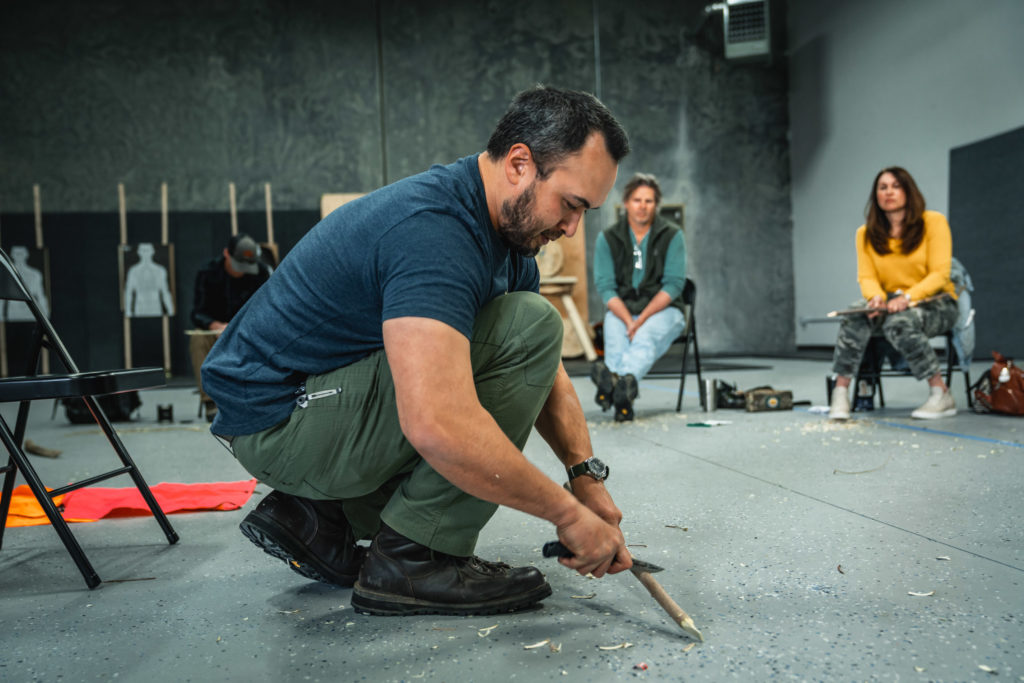
Above: Kevin Estela regularly holds bushcraft and survival courses/clinics at the Fieldcraft Survival Headquarters and training facility in Heber City, Utah.
What subjects and grades did you teach?
Kevin Estela: Over the years, I taught everyone from freshmen to seniors in high school. It was essentially all the history courses in our catalog — everything from general history to college-prep AP classes, like world history, geography, and AP U.S. history. I also taught a bunch of elective courses like geography and cultures where I was able to show kids things like friction fires and atlatls. I was able to incorporate some of the survival stuff into the curriculum.
If you could wave a magic wand and change the educational system, what would you do?
Kevin Estela: What I would love to do is hold parents accountable. I think teachers out there now are kicking ass and doing what they can. Unfortunately, the students’ performance is often reflected upon the teacher. If we were to apply the same logic to, let’s say, a chef who’s given ingredients that are spoiled or tainted, then you wouldn’t blame the chef, right? If you start with good ingredients, which is the byproduct of good parenting, I think that would improve the way schools perform.
When parents come in for school conferences there’s always these comments like, “What are you doing to my kid?” It’s like, I’ve got your kid for 84 minutes, you’ve got your kid for the entire afternoon, evening, and morning for breakfast. I would definitely hold parents accountable and have mandatory attendance for them at school conferences, because I think many of them are just looking to dump their kids at school to get them out of their hair. If parents don’t care, they need to be forced to care, because they’re friggin’ parents!
How did you get into survival instruction?
Kevin Estela: It was a byproduct of canoeing and kayaking. Along with the courses I gave at the canoe shop, we’d occasionally have campouts where I’d show kids how to make fires and cook. It was what I was already doing. It wasn’t until 2006 that I took a course with my mentor, Marty Simon, and it was eye opening. The way he presented was straightforward. No fluff, nothing spiritual, just hard skills. That was really the turning point for me — seeing how someone could demonstrate all these skills that are incredibly difficult to master, but very important to convey to the students. I was like, damn, I want to do this.
I didn’t realize that Marty was grooming me to be one of his instructors. Every time we’d organize a camping trip, Marty would throw these occasional tests at me like, “Hey, what’s this plant?” or “I bet you can’t do this.” And then the following year, Marty was like, “Hey you’re coming up for the basic class, right?” I was like, “Marty I did that class last year.” He goes, “No, you need to come up for it.” Marty is one of my best friends, so I agreed. When I got up there, he was like, “Here are all the students, I’m Marty, that’s Kevin, and he’s my instructor.” I had no idea. I was like, OK, I guess I’m an instructor now. That was the formal beginning of me teaching survival skills.
Who are your other mentors or influences?
Kevin Estela: There were a few guiding people. In addition to Marty, I learned from Tim Smith at Jack Mountain Bushcraft, Mike Douglas, Arthur Haines, Mal Stephens — all those guys are affiliated with the Maine Primitive Skills School. Really, my first survival teacher, so to speak, was my dad. In January of 1941, the Japanese Imperial Army invaded the Philippines. My grandfather was a wanted man for his political stance and outspoken nature, so he moved the family from my father’s town into the jungle. That’s where they lived from 1941 to 1945.
From age 2 to 6, my dad grew up in the jungles of the Philippines living in a cave. You can imagine why, having that as a bedtime story as a kid, I didn’t care about playing football or baseball. I wanted to build fires, learn to shoot a bow and arrow or slingshot, and do all the stuff that my dad did. Those were the key influences. Around the time I met Marty, I started training in Sayoc Kali, which is a Filipino martial art. What I was exposed to there really influenced me as well.
Kevin’s EDC
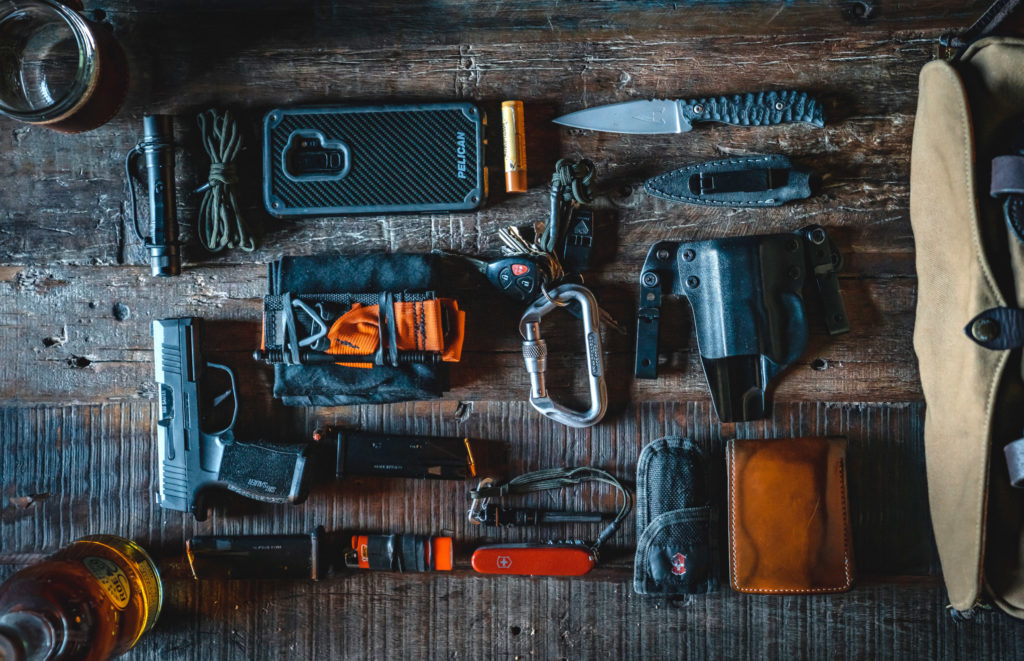
- Android phone
- Burt’s Bees honey lip balm
- Atienza Kali EDC 4 Blade
- Blackpoint Tactical Mini Wing holster
- Filson wallet
- Swiss Army Knife Ranger with Exotac fireROD
- BIC Lighter with bike innertube wrap
- SIG Sauer P365 XL with standard slide and spare mag
- SOF-T Tourniquet
- NxN merino wool handkerchief
- Streamlight Protac 2L
- 6.3 feet of 550 Paracord
- Keys
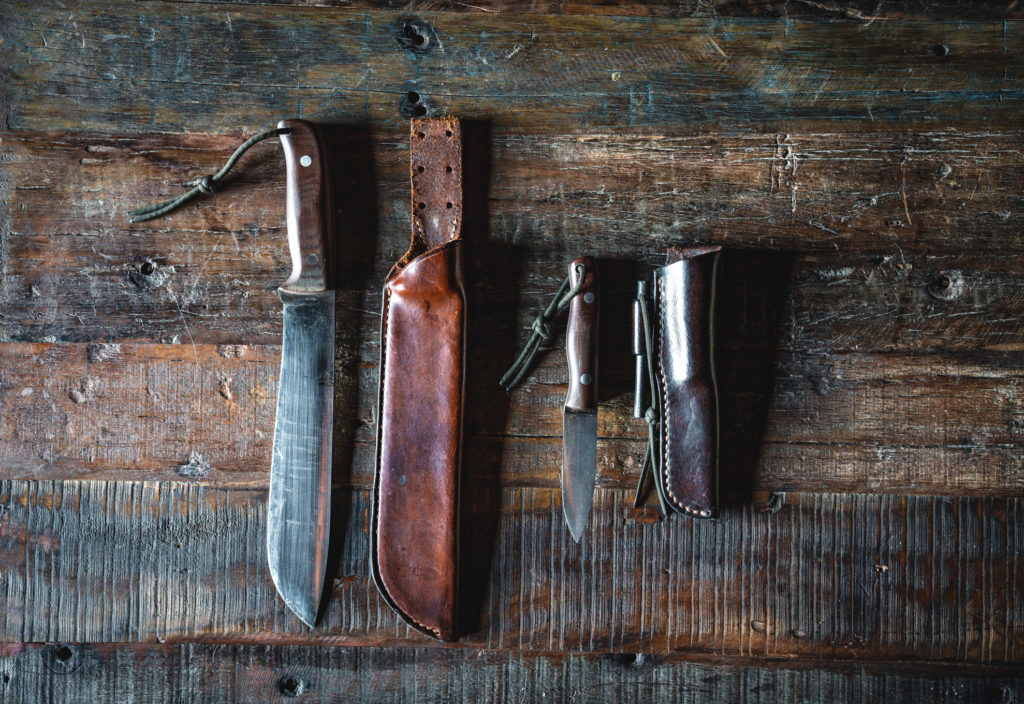
These two knives are the original prototypes of the Gossman Knives Bolo and the Gossman Knives Polaris.
How did you hook up with Fieldcraft Survival?
Kevin Estela: In October of 2019, the owner of Fieldcraft, Mike Glover, reached out to me to be on his podcast. He read my book and said he wanted to talk, so we podcasted for about an hour and a half and, when it was over, we talked for probably another hour afterward. We instantly had a connection as two guys who were half Asian, connected to the outdoors, and stuff like that. It wasn’t until June of the following year that Mike reached out to me and was like, “Hey, have you ever thought about teaching survival full-time?”
I’d thought about it, but I was a tenured high school teacher and was pretty comfortable in my position there. He gave me an offer that was pretty enticing, so I went out to Fieldcraft in August of last year and co-instructed the bug-out-on-foot course. I met Kevin Owens, Mike, Austin, and all the guys here and thought, Man, this company is great to work for. Then, I went back to teaching at high school, and, with all the distance learning, I felt in my heart I was done teaching there. I knew I could have a bigger impact elsewhere and that Fieldcraft could help me get to where I needed to be. I put in my notice, left teaching, came out to Utah to scope out new places to live, and in January, I moved out here.
What areas of teaching do you focus on?
Kevin Estela: I focus on different concepts, like all methods of fire-starting from modern back to primitive, but I always teach the strongest first. If I only have one afternoon with a bunch of people, I want them to have the best tools available to them early on, and then I can handicap them backward. I’ll show the traditional bushcraft skills because I find them interesting.
I love learning from folks who are traditionally living a bushcraft lifestyle, and I see how those skills can be applied to the modern world, but I also focus on the ways of the modern sportsman. I love teaching fishing, hunting, incorporating the firearms training that I had, and showing people how to be better marksmen, so it’s really all-encompassing. I can talk about the short-term 72-hour skills or the long-term skills of prepping your home. That’s one of the beautiful things about working here — they’re letting me cover so much ground.
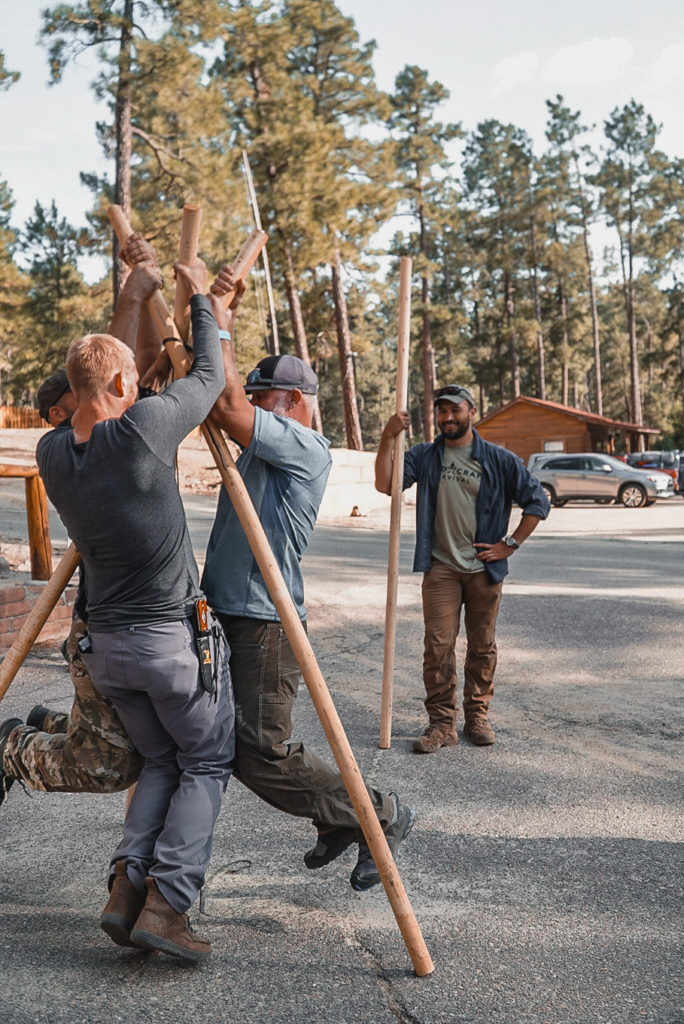
Above: Estela blends tradition with modern tools to address backcountry topics such as using tripods to construct camp structures.
How do you think COVID has impacted what you do and survival awareness overall?
Kevin Estela: Positively. I think it’s easy for people to play the victim with COVID. It’s easy for people to say, “Oh, I can’t go out to this diner,” or “Oh, I can’t hang out with my friends.” What they do have is time to self-improve. COVID has made prepping less of a dirty word and made people want to get outdoors. During COVID, I see more people on trails now because they weren’t able to meet together, but they still wanted to be active or go fishing.
I know a lot of states have loosened the restrictions on fishing and actually opened the seasons earlier to get people outdoors. I think COVID has made prepping more important because we realize how fragile all of our supplies are. Toilet paper disappeared. Here we are a year later and there’s still toilet paper, but I think people are realizing they can’t just have the bare necessities. You need about a month’s supply of provisions, because at any point hysteria can kick in.
You mentioned prepping having a negative connotation. Do you think calling it prepping or survival instruction is accurate or misleading?
Kevin Estela: Calling it prepping is part of what the ultimate goal is. I preach readiness. That’s my personal thing, and what I wrote about in my book, and that comes from Sayoc. Prepping is part of the solution to survival, meaning working toward readiness. Readiness is equal parts awareness, preparedness, and willingness. Prepping is great — I love it when people go to the grocery store and buy a little extra to put aside, or cut the trees back from their houses so they don’t have to worry about them falling on power lines. People should realize that they shouldn’t be content with just buying a month’s worth of food. They should constantly strive to be more ready by being a student for life, constantly testing themselves, and staying in shape. It’s not necessarily misleading, it’s just not the whole picture.
Why do you think survival or prepping often gets a bad rap as an extremist or paranoid movement?
Kevin Estela: I think it’s all left over from the ’90s. Let’s face it, this country has had some very high-profile “preppers” who’ve given us all a bad name. I met some of the people who I consider friends today in prepping circles. With the media, we tend to focus on the negative. We don’t look at the communities that are getting together to teach kids how to safely hunt, or notice when women get together and build support groups about how not to be a victim. I think prepping gets a bad rap because of the residual memories of some of the preppers we’ve had in this country, but it’s not that preppers are bad people. If anything, you’ll see more preppers and more communities looking to help each other than hurt each other.
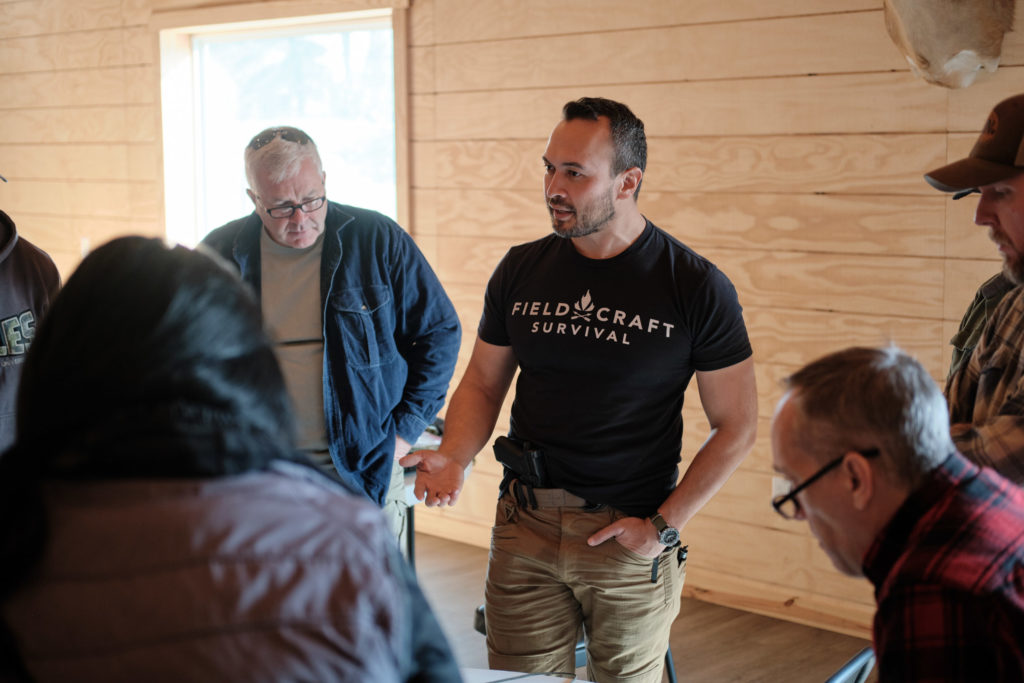
Above: Even as Director of Training, Estela enjoys traveling the country to teach.
Tell me about some of the censorship that Fieldcraft Survival has experienced.
Kevin Estela: We’ve had bank accounts shut off without warning — $70,000-plus frozen until further notice. We’ve seen on social media, when you search for various personalities we have at the company, their names don’t come up in the search function, even though they have the highest number of followers. You’d assume they’d be the first ones, but because of censorship, they’re pushed to the bottom.
We’ve seen where we’ve put out information and that information has had banners go across it saying it’s been proven false by fact checkers, even though it’s a fact taken from a reliable source. We’ve seen this across the community, and it’s something we’re trying to combat by building our own app and moving to our own server, because we know that it’s not going away. We know that for at least the next four years, we’re going to continue seeing people come after groups like us because they assume we’re something that we’re not.
Did you get any explanation as to why they’re censoring you? What set this off?
Kevin Estela: I don’t think we got any explanation for it, but I do know censorship is triggered if you have any connection to firearms, keywords like “knives,” or if you have a political stance that isn’t tied to either party but points toward freedom. It’s a shame that in this country, you have to worry about saying you’re proud of your country.
Back in September, I posted a picture of my face in front of an American flag, and said I love this country. I said that my dad was from the Philippines, that my mother’s side is from Poland, and that if it weren’t for the flag behind me, my Filipino relatives would be speaking Japanese and my Polish relatives would be speaking German. I posted that and lost well over 100 followers because I was speaking about how proud I was of my country. I may not always trust my politicians on both sides, but I will always love this country. And that’s something I’ll say until the day I die.
What do you think the collateral effects of this censorship movement are going to culminate in?
Kevin Estela: I think we’re going to see a lot of people who fall back on rhetoric without explanation. People use catchphrases to explain their dislike or hatred of people that are dissimilar to them, but they won’t be able to explain it beyond what I call bumper-sticker talk. I don’t think we should be looking at each other as enemies — we need to see that we have different opinions. Right now, when we express an opinion people are quick to cancel, shut off, and censor. Cancel culture is the trending term, but the real term should be “censorship culture.” I believe in the First Amendment, but we’re moving toward censorship and that’s really really dangerous.
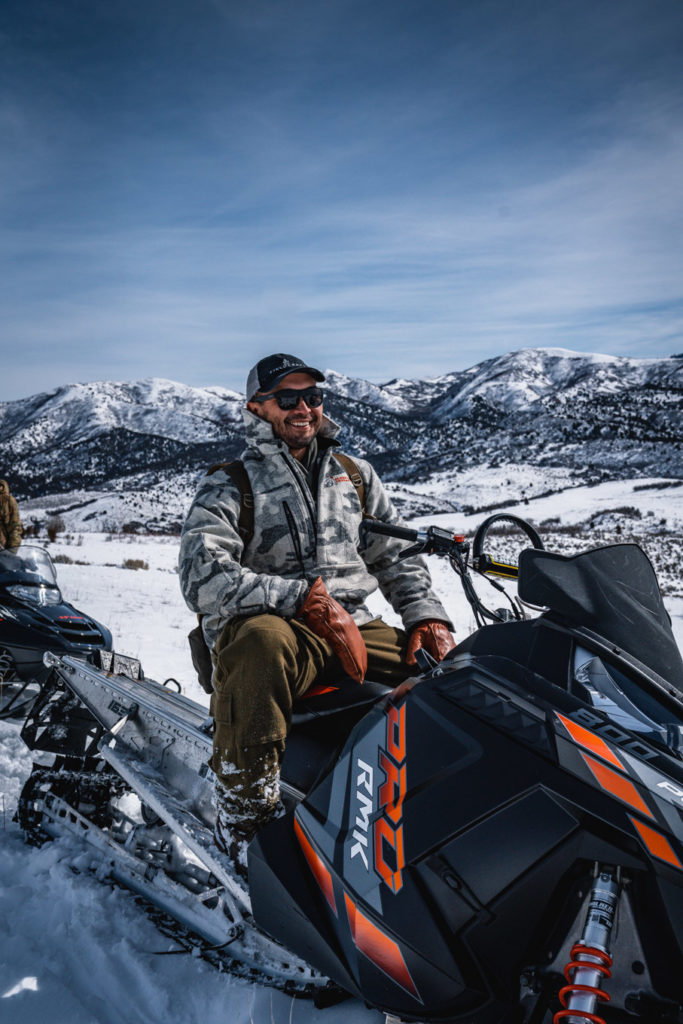
Above: Estela on a recent scouting trip of the 2,500 acres of land Fieldcraft Survival utilizes in conjunction with Kifaru International.
Survival is an instinct that we as human beings have, yet so many people are afraid of learning more about it. What do you think can be done to educate the public about survival so it’s not continually stigmatized?
Kevin Estela: What’s really important is bringing up real-world examples. Right now, Texas is doing very well, but not too long before that, Texas was being hit by extreme snowstorms. There was a huge cattle die-off; people lost power and dealt with temperatures that their homes weren’t equipped to handle. You have to demonstrate that survival isn’t just what’s portrayed in pop culture. It’s not just Man vs. Wild or My Side of the Mountain. Survival is day-to-day. Little habits that make you stronger — I don’t see how those habits can be a bad thing.
Teaching people to refill their gas tanks at the halfway mark instead of waiting for it to get to a quarter or eighth, that’s not bad information — it’s survival. It prevents you from having to live a hard life. Tying all the skills back to real-world examples, which we can find right here in this country or anywhere in the world, that’s what’s going to get people to want to learn more or explore. When they realize that feeling of self-reliance and have a true understanding of their capabilities, it’s intoxicating. If someone needs a knife, it’s a great feeling to know you can pull a knife out of your pocket to help them cut something. It feels good being useful, and it feels horrible when you’re expendable.
As individuals, what do you think the most likely survival situations are that people will face?
Kevin Estela: One of the likeliest survival situations someone might face is a broken-down car. We have AAA for a reason, but they’re only useful if you have cellphone service. It’s important to learn how to survive in and around your car, how you can keep it moving, and what you can pull from your car to extend your survivability. That’s something that, whether it’s 25 years from now or whenever we have flying cars, is going to be a real concern people need to address.
Another thing I think people need to realize is that every year, survival scenarios happen when people get lost. As people explore the great outdoors, they’re going to continue to venture where they can’t find someone else. They’ll get lost, injured, and have to fall back on themselves to affect their own rescue. So, I think between vehicles and backcountry travel, those two are very realistic.
The third most likely situation is some type of urban or suburban violence. You’d be a fool to think that all the protests we had last year were peaceful. Even people who supported the relevant political philosophies still had their businesses destroyed or were beaten in the streets, so I think it’s very important to learn the concepts of protection and what you need to do to stay safe.
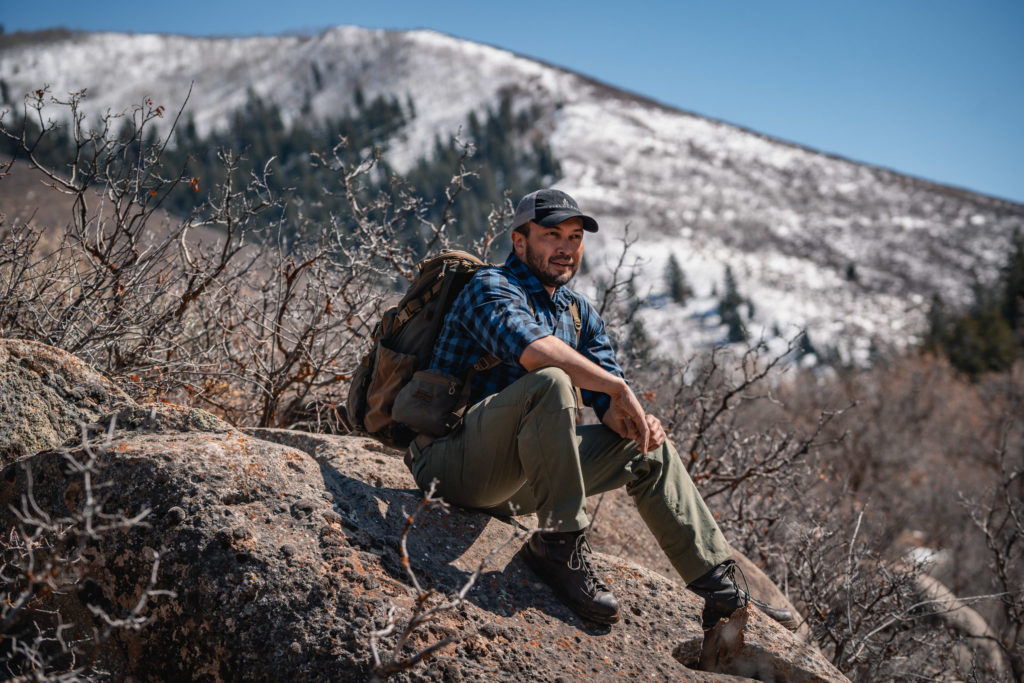
Above: At the heart of Estela’s passion for teaching wilderness survival skills is a genuine love for the outdoors and an active lifestyle in the mountains.
What sort of nationwide survival situations might we face in that same timeframe?
Kevin Estela: I think at some point we have to look at the threats to our infrastructure. There’s no doubt our digital infrastructure is very vulnerable. Individuals are getting hacked every day. Financial crises happen when personal information is compromised. It’s really important that everyone in this country does what they need to do to make sure their financial security is in check, because we have domestic and foreign actors who realize how vulnerable things are. Another concern we have to look at is if COVID were to mutate into something that’s resistant to our existing forms of prevention. The flu mutates from year to year and, up until last year, no one had really heard of COVID. I’m wondering if it’s going to develop another strain that is terrifyingly difficult to combat.
What aspects of survival do you think children should be made to learn in the K through 12 curriculum?
Kevin Estela: I wouldn’t censor any history. I believe you should make children smarter sooner, not keep them dumb longer. I don’t believe in hiding history. If a kid asks me a question, I’m going to tell them the answer, but that answer is going to be as nonpartisan and objective as possible. I’d also love to incorporate more training about what’s right and wrong — teaching how to be a good American, beyond what your basic high school civics course teaches, with a volunteer component where kids are required to do some type of community work. If kids do something in the community, they’ll respect it more.
The most important thing I’d like to see is a mentoring program of more high school students helping junior high students, and the junior high students helping the elementary school students. This would be under supervision, of course, but I think we don’t have a shortage of resources. There are plenty of aspiring teachers who want to teach, but there aren’t any jobs for them. I think they can earn a spot, maybe make a little money on the side, and gain plenty of experience by helping the students they’re certified to teach.
A lot of people think that survival training only applies to the outdoors. How do you make average people understand how it applies to an urban setting?
Kevin Estela: When it comes to medical training, everyone pictures trauma training as active-shooter training or blowout training where you’re dealing with gunshot wounds, stabbings, or violent acts like that. So, we make it a point to explain how a car accident could lead to something that requires the use of a tourniquet. We explain how physics work, and how steel can be turned into jagged edges very quickly, and we try to make it as realistic as possible by bringing up scenarios. You’re more likely to be in a car accident than a plane crash. I carry a tourniquet every single day. I carry multiple tourniquets in my vehicle, because there could be multiple passengers in that vehicle. We try to live the lifestyle we preach and that’s something we always say. What we’re showing people isn’t just a hobby, it’s how we live day-to-day. We challenge people to call us out if they catch us without this gear we say that we carry.
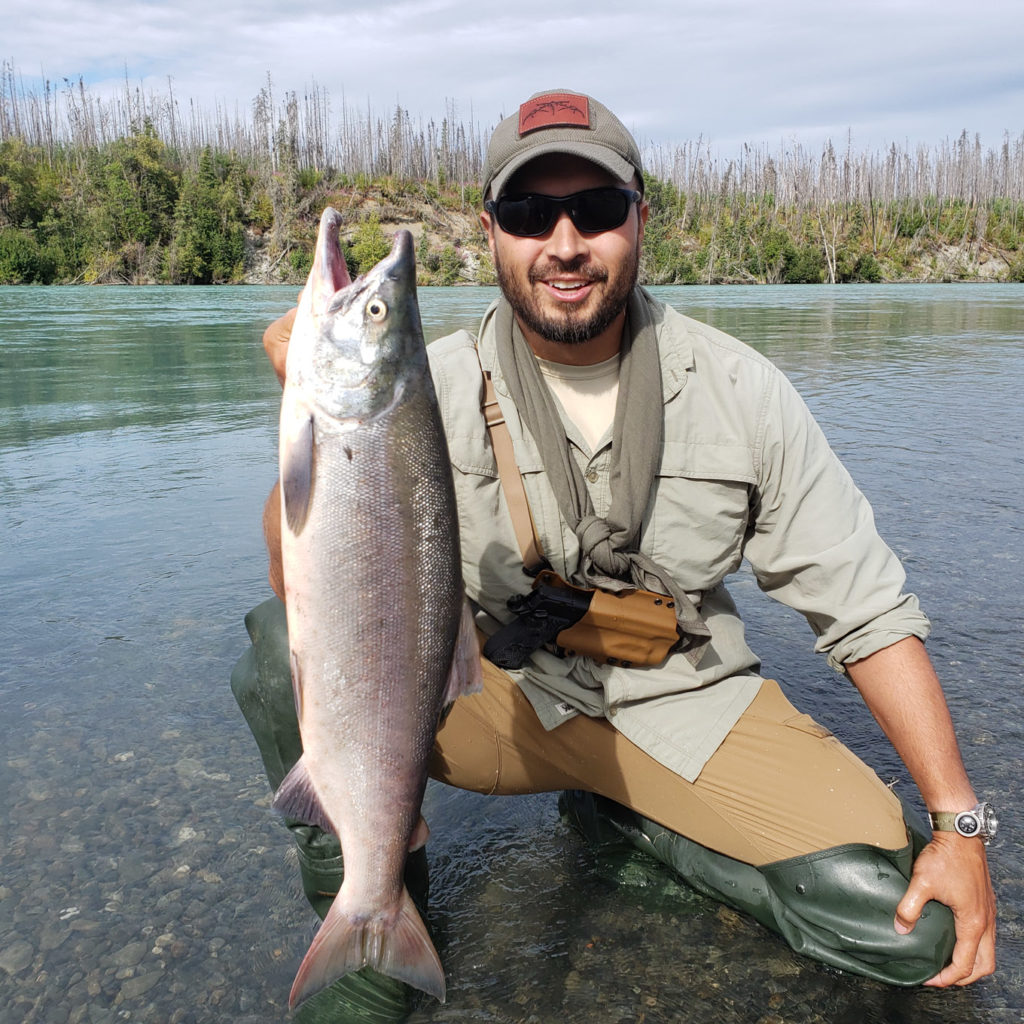
Above: A lifelong outdoorsman, Estela is an avid hunter and fisherman pictured here on the Kenai River in Alaska.
What do you think the survival community, in general, needs to do to convert skeptics into passionate advocates?
Kevin Estela: The survival community is really good at promoting how tough, strong, and secure they are, but I think they’re really bad about telling outsiders how weak they are or how wrong they are. There’s no doubt there are some who are ready and some who aren’t, but we shouldn’t use our capability as something to taunt people who aren’t like us. If anything, we should be elevating and teaching them. The survival community needs to educate and encourage newcomers. If I can get a brand-new person out in the woods or in the classroom and show them something memorable, I’m making a difference. We need to stop acting like we’re better than they are, because, if anything, that makes people think we’re crazy. That’s not how it should be.
Have you ever been in a survival situation?
Kevin Estela: There were times I was lost as a teenager. I went on a camping trip and we lost clear sight of a mountain, so we had to find the trail in the morning. In 2016, I went to Alaska and was in the early stages of hypothermia because I was floating down the Sag River with one of my hunting buddies. I had to remedy that by boiling water and keeping the water inside a metal container next to my body. As someone who’s made a pretty good bubble to protect myself against these scenarios by thinking about them ahead of time, I’d say getting lost and getting really cold are the two that come to mind. Both were great learning opportunities. After I got lost, I learned to use a map and compass really well. After I got cold, I reexamined the clothing I wore when I was hunting. I’ve changed it to be warmer, better, and more evolved.

Above: Estela continues to train in marksmanship with pistol, shotgun, carbine, and precision scoped rifle.
Do you think you’ll write another book?
Kevin Estela: Definitely. I already have five chapters written in the second book. My original publisher wanted me to do a cookbook, which I’m all for. I may eventually get to that, but I wanted to do an advanced survival skills book. I had to cut my first book by 20,000 words to fit within the publishing guidelines, so the next book will be an extension of the first. I’m going to cover topics like marksmanship, canoeing, winter travel and camping, field repair of equipment, and more of the survival skills people would want to learn after they do the basics.
What do you think most survival instructors get wrong?
Kevin Estela: They put too much emphasis on gear. It’s very easy for instructors to stick their logos on everything, when there might be a better product already being made by a brand you’re not seeing a penny from. In the end, is it really the best gear for your students? Another thing — many will lead through hardship first, and have students waste their time and be frustrated before they achieve success. I’d rather see students achieve success and handicap themselves until they hit a failure point. Once they get to that point, I can coach them past it until they hit another.
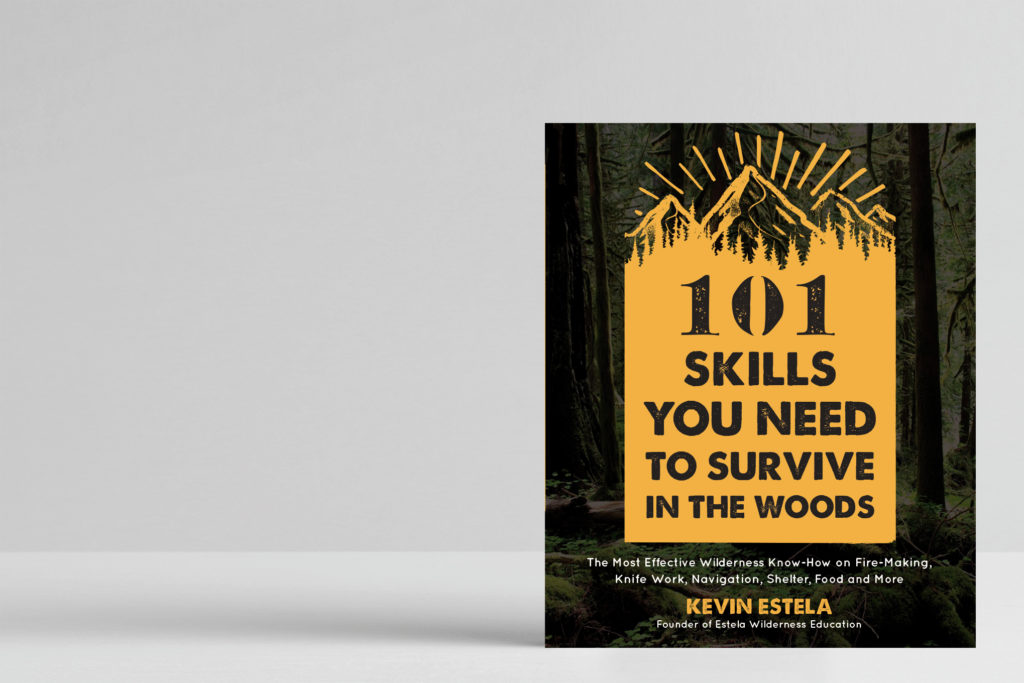
Above: Estela’s book, 101 Skills You Need to Survive in the Woods, is a bestseller and endorsed by many primitive skills practitioners and elite military personnel.
What’s one piece of kit people should always have with them?
Kevin Estela: A knife. I’m Filipino [laughs], so I’d say that everyone needs to have a knife on them, preferably a fixed blade. I could teach a whole course on just using a knife. With a knife, you’re able to create so many products in the outdoors to affect your survival. I could make a bark bowl to collect water, I could start a friction fire, I can process materials to make cordage, and I could defend my life with just a knife. The knife is absolutely important — that’s a cultural thing, but it’s also based on experience.
What skills do you still want to learn?
Kevin Estela: More skills in terms of alternative mobility, like advanced horseback. I’m a scuba diver and would love to learn more advanced scuba skills. I’d love more medical training because you can never get enough certifications or experience. Amateur radio too, always expand there. All those skills fall back on that concept of combat effectiveness. The concepts of being able to shoot, move, communicate, resupply, or support — those are some of the key areas of interest now. I’ve always enjoyed marksmanship training. I’m just constantly trying to absorb what’s useful and apply it to what I teach.
[Editor's Note: Photography by Fieldcraft Survival.]
Kevin Estela

Age: 41
Hometown: Bristol, Connecticut
Recommended reading list:
- Out on the Land by Ray Mears
- Deep Survival: Who Lives, Who Dies, and Why by Laurence Gonzales
- The Gift of Fear: And Other Survival Signals That Protect Us from Violence by Gavin de Becker
- Lord of the Flies by William Golding
Martial arts background: Sayoc Kali Associate Instructor Level 6, Brazilian jiujitsu purple belt
Favorite drink: Coconut water
Favorite knife: Gossman Knives Polaris
Favorite quote: “Trust your training.”
URL: fieldcraftsurvival.com
More Survival Spotlights on OFFGRID

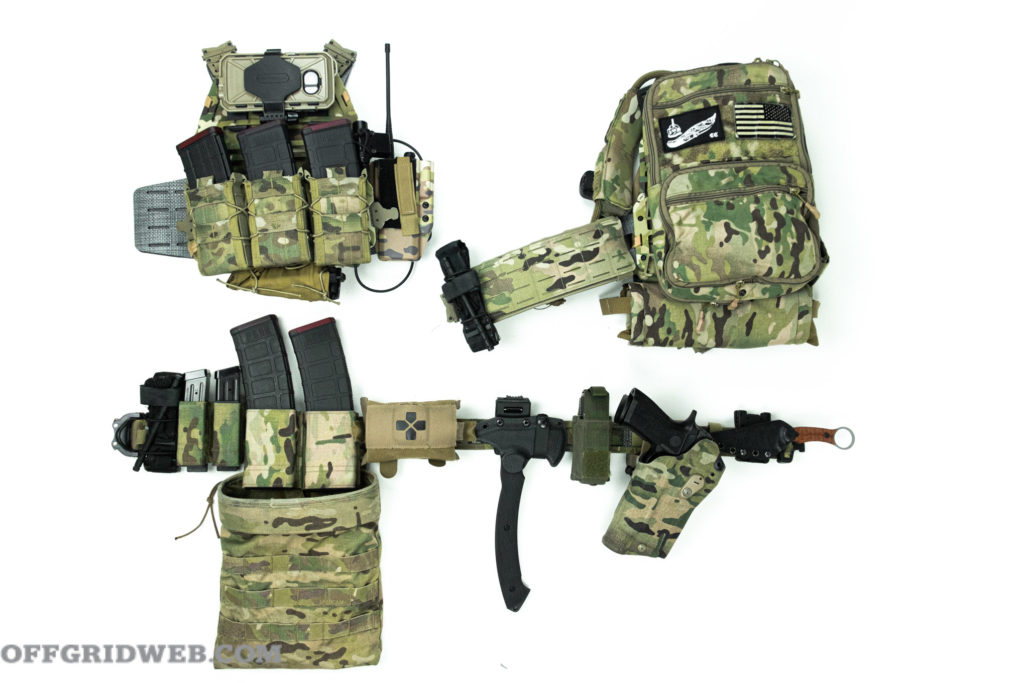
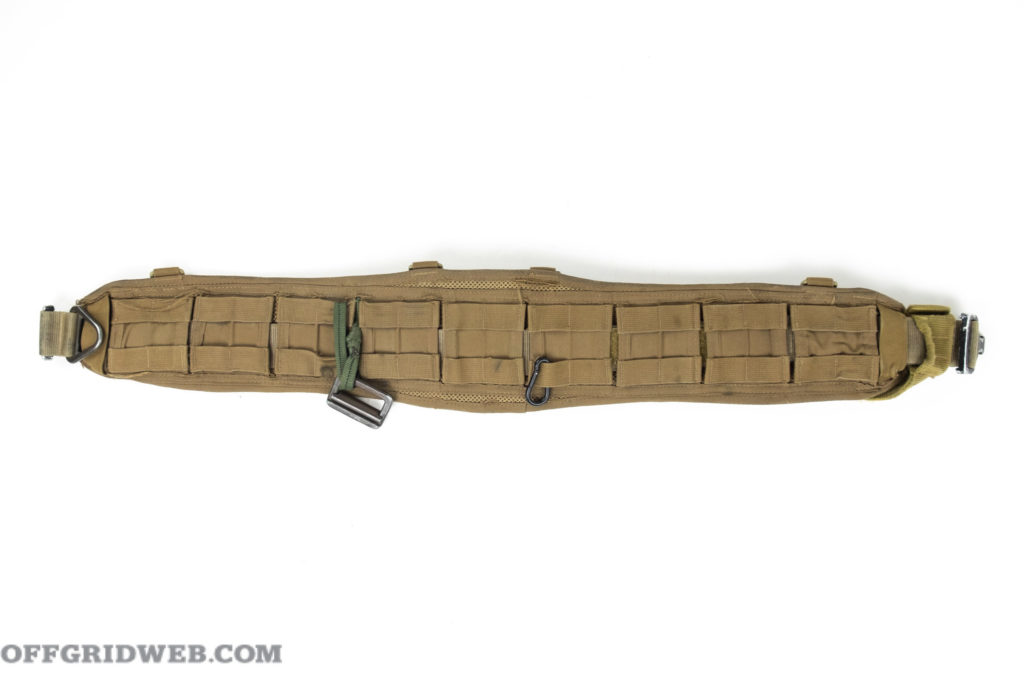
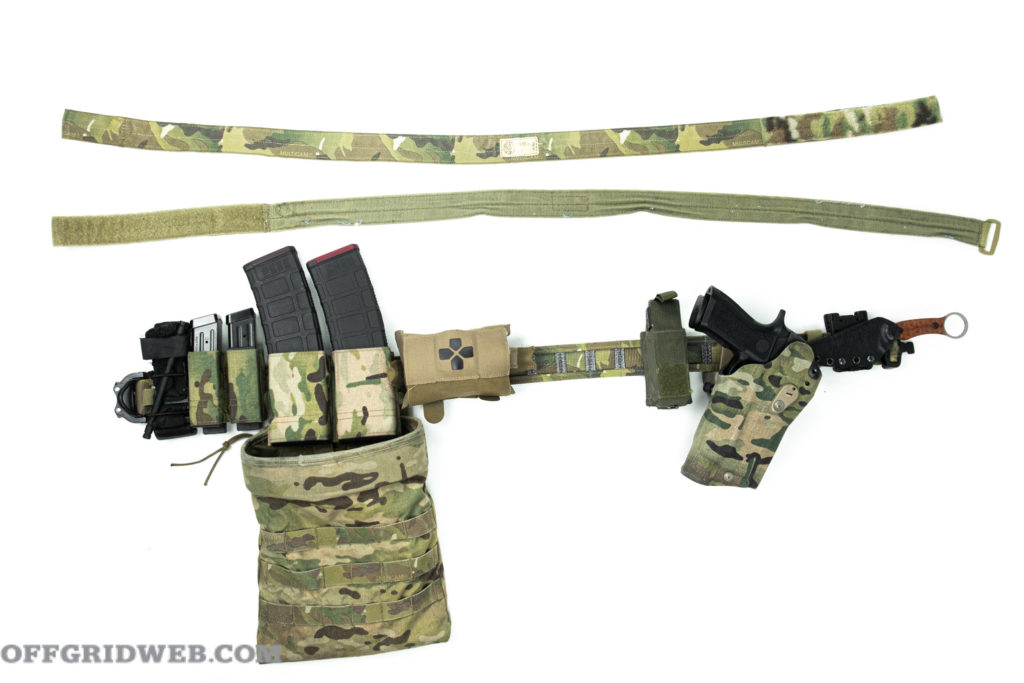
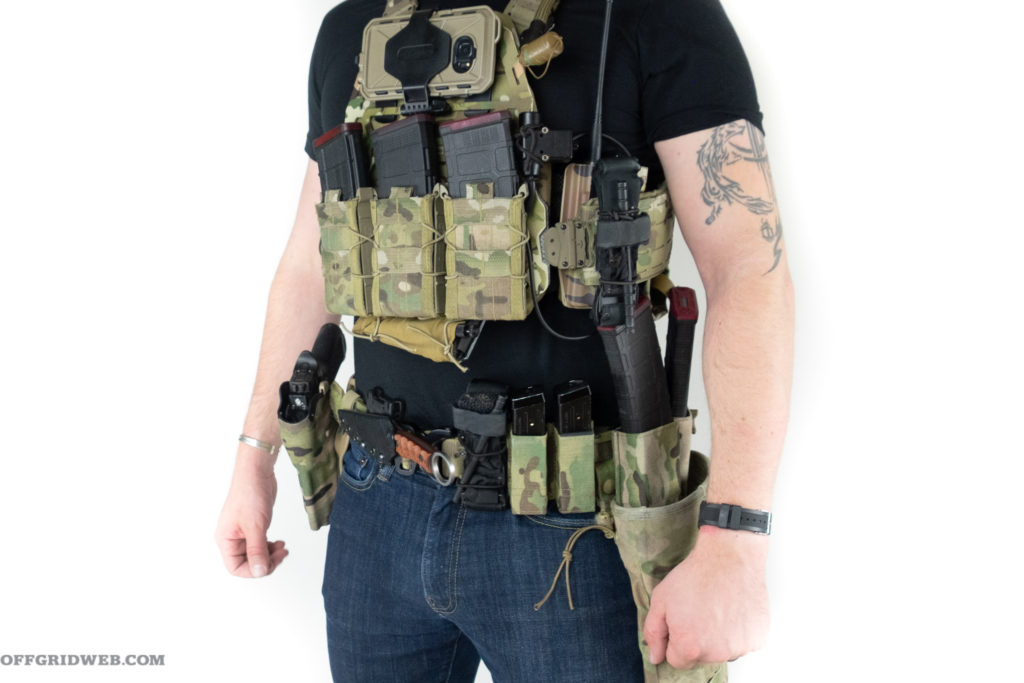
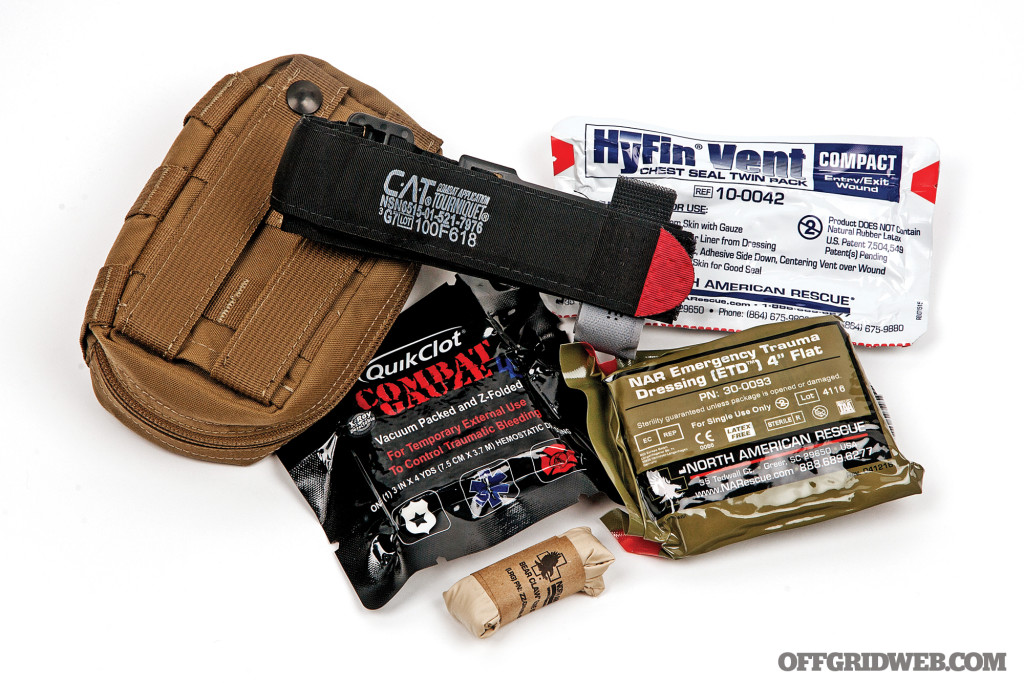
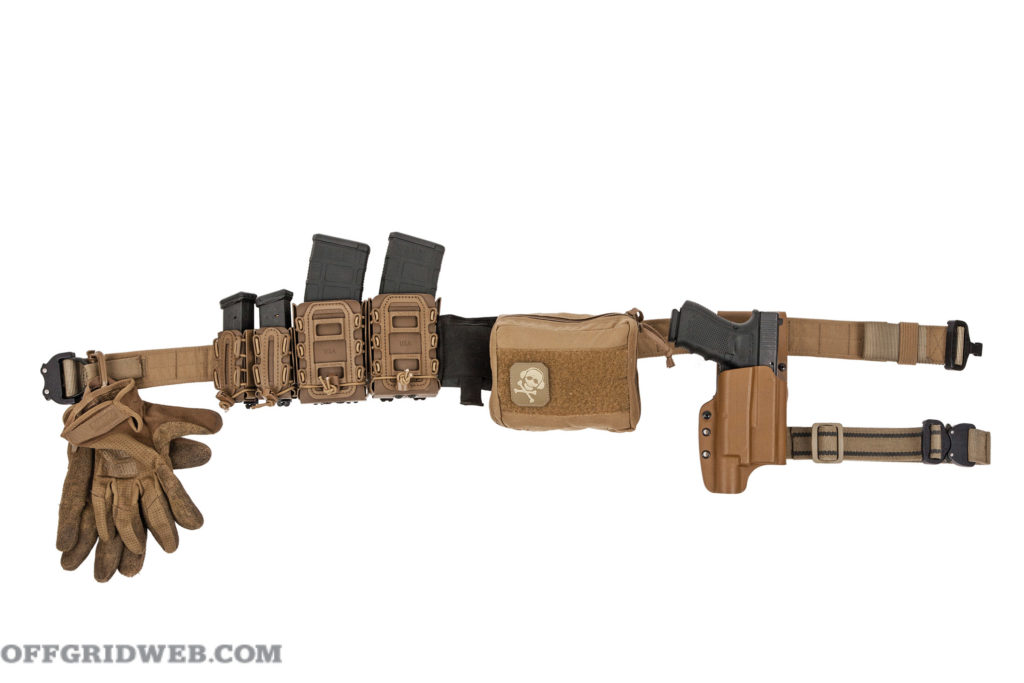

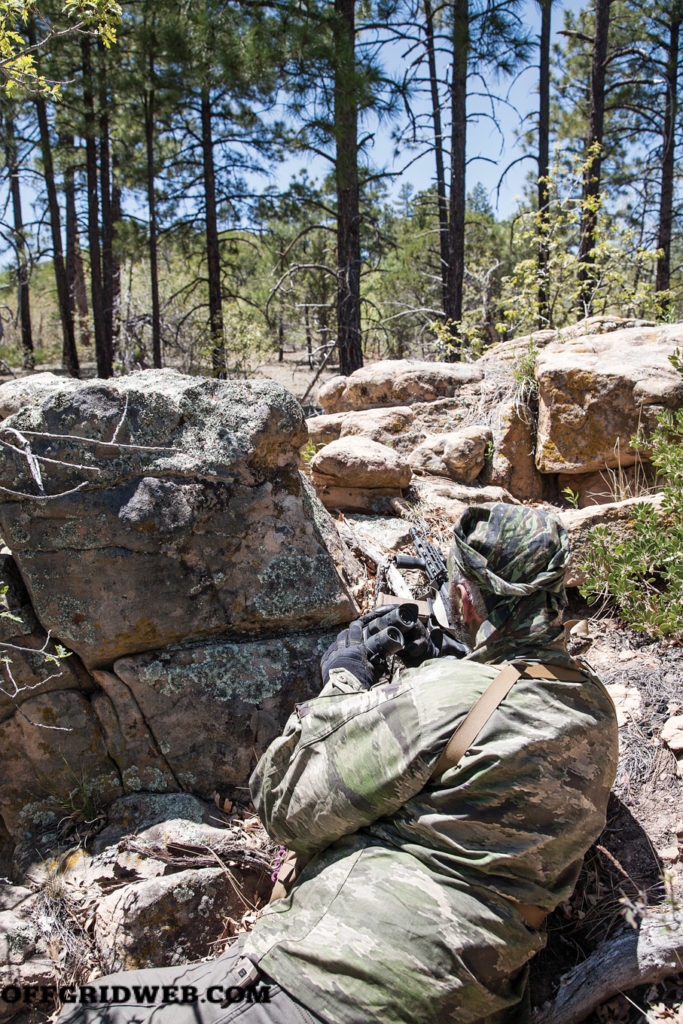
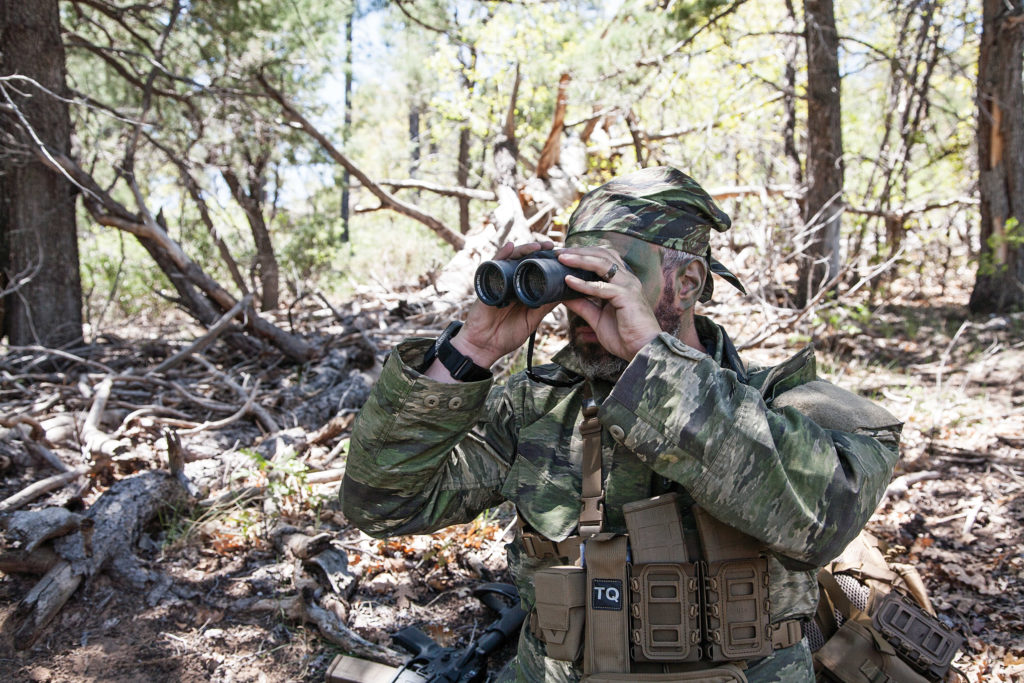
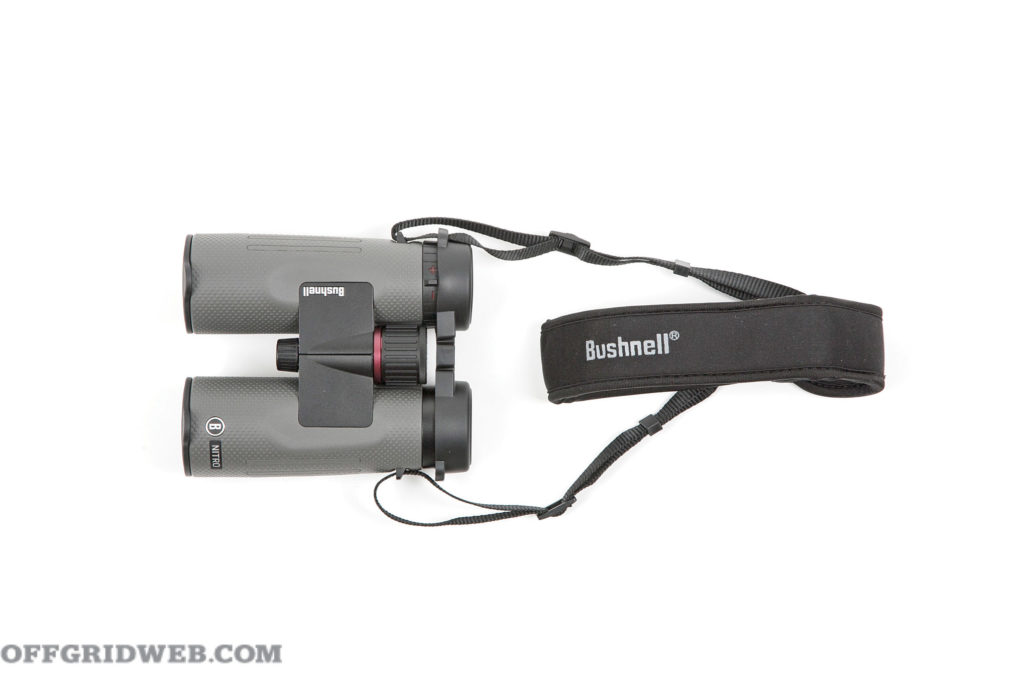
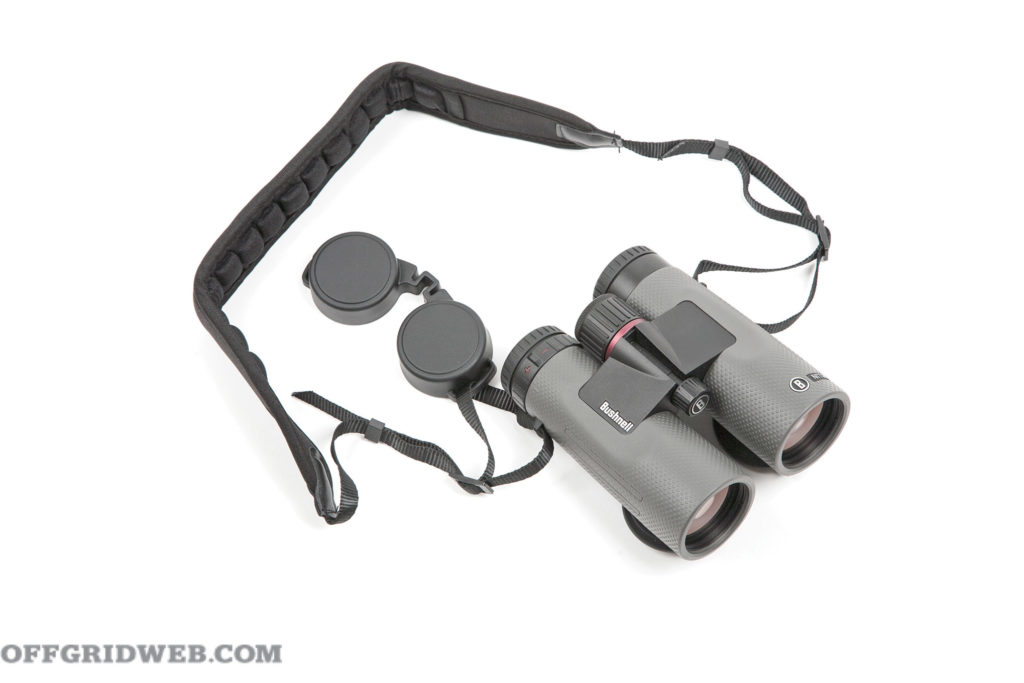
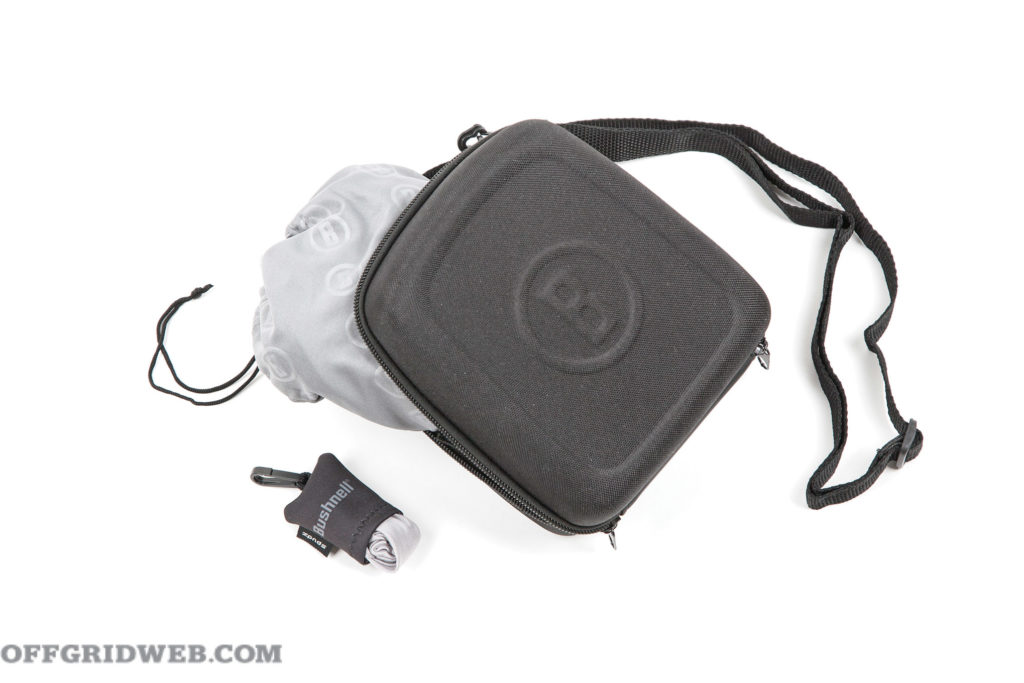
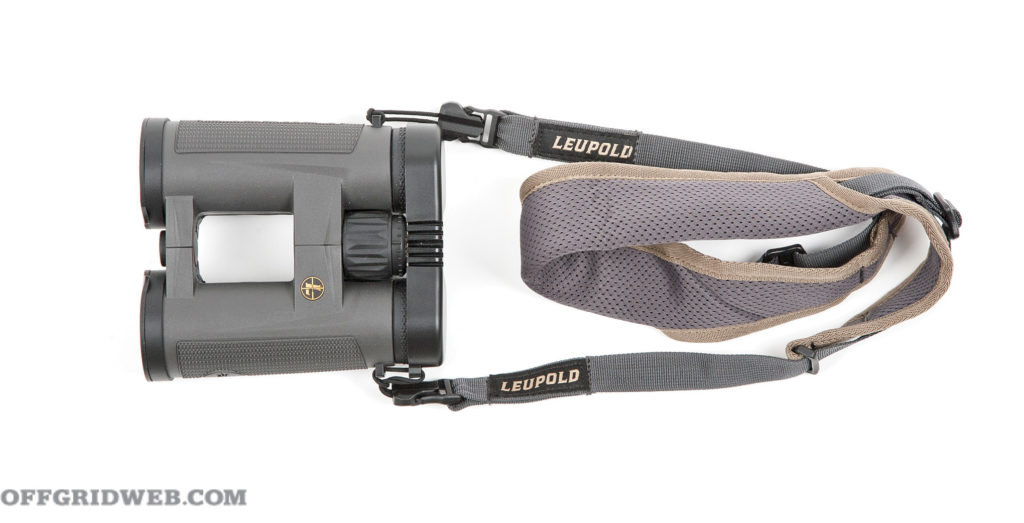
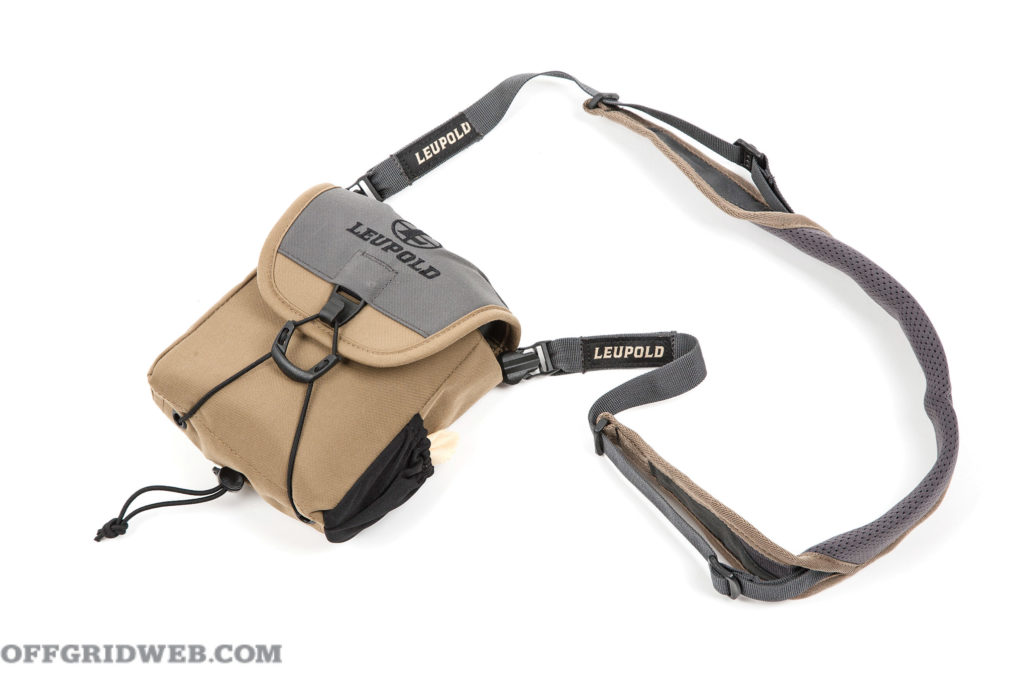
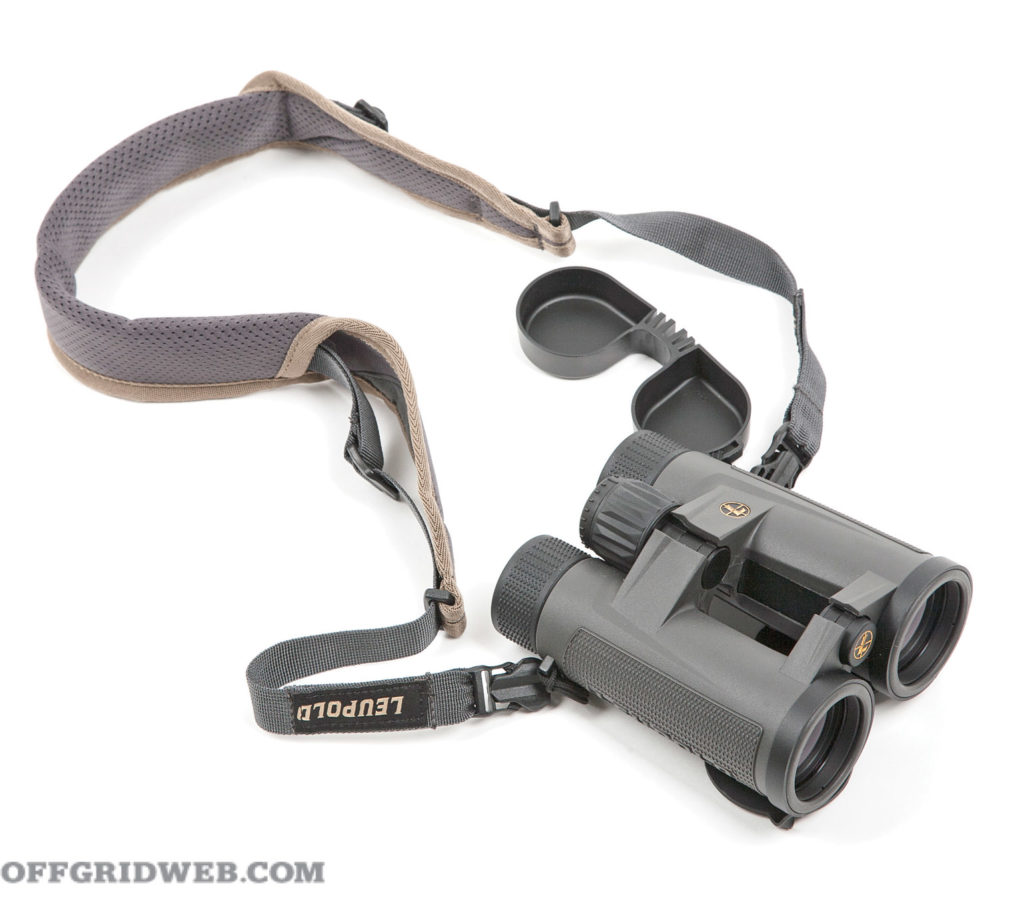
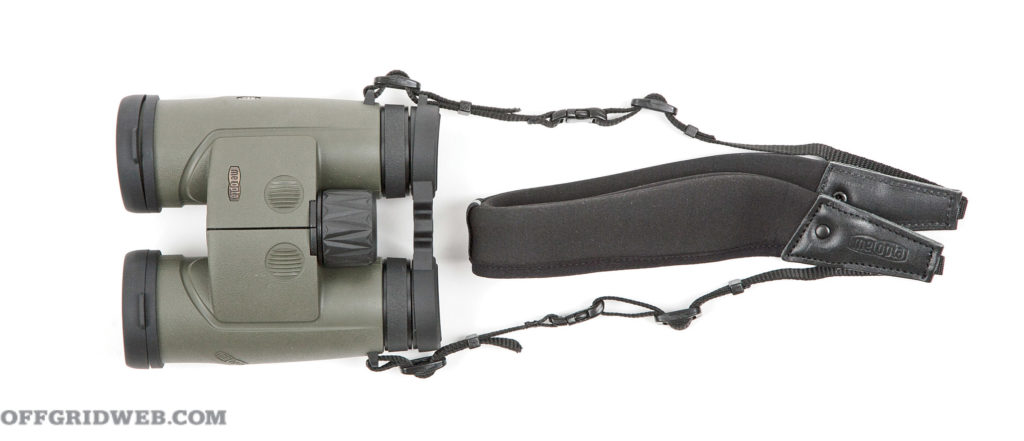
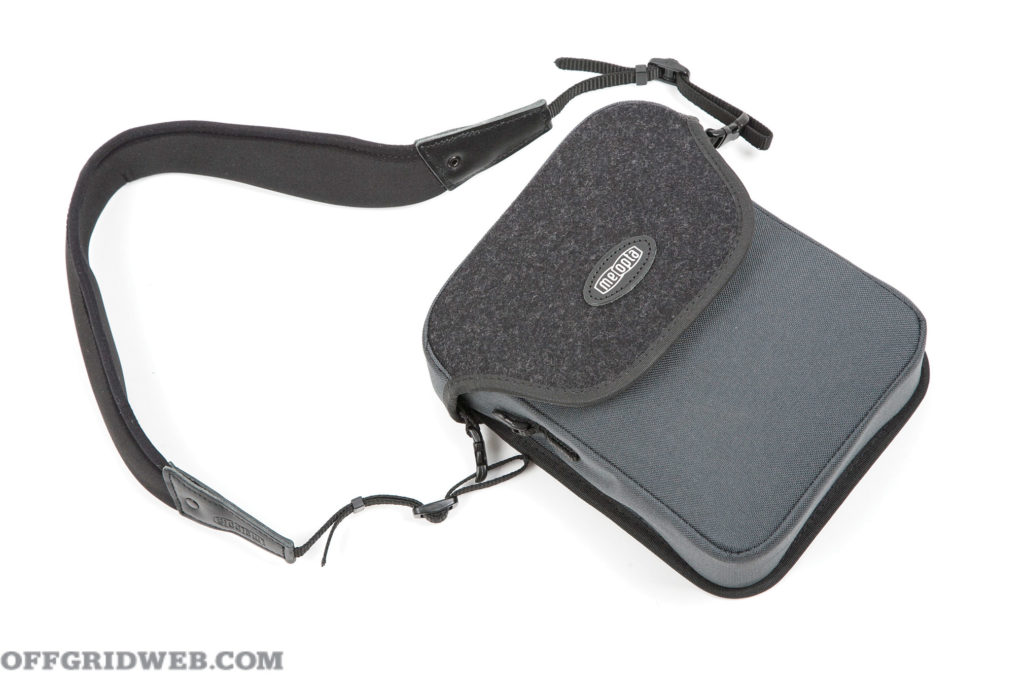
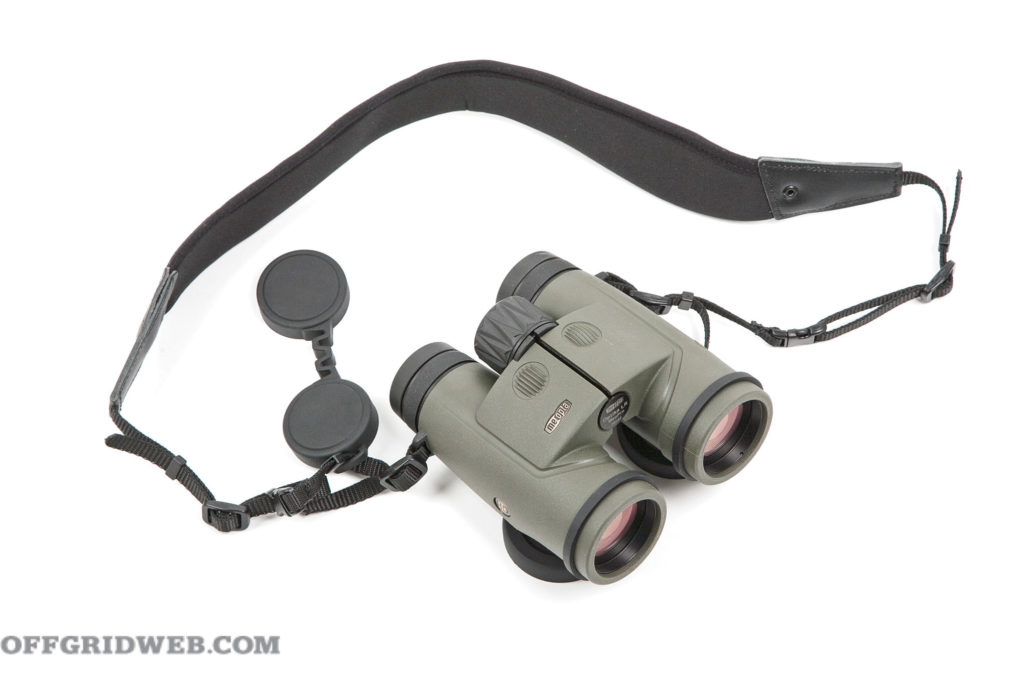
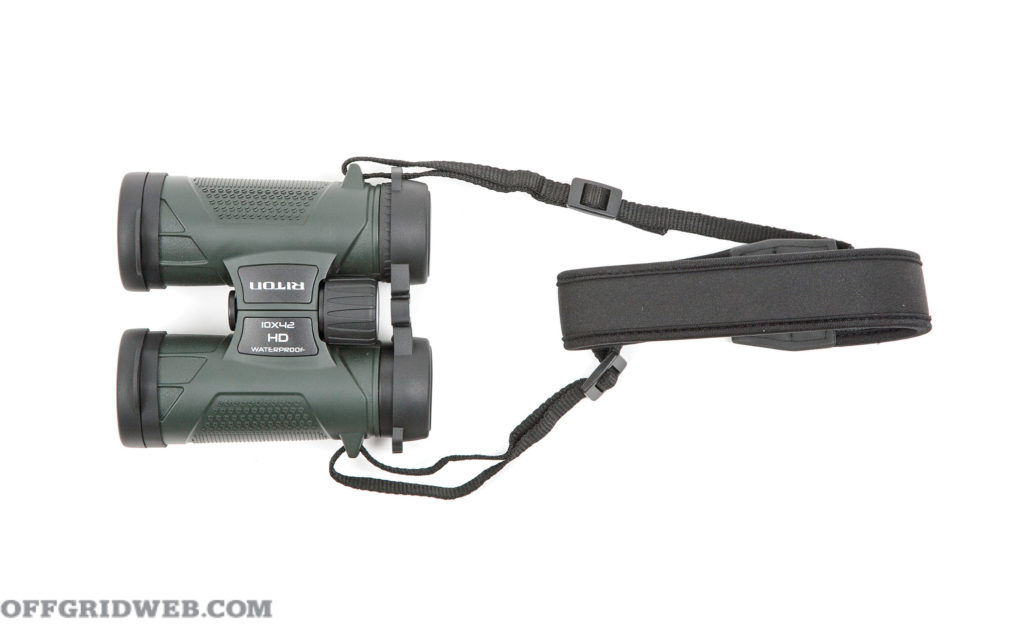
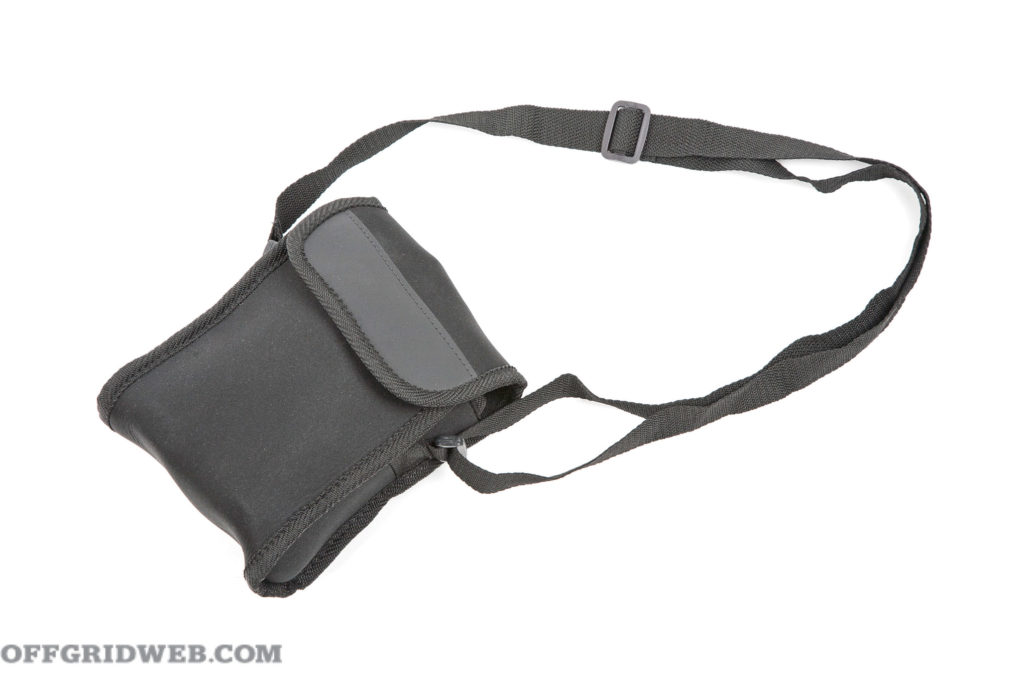
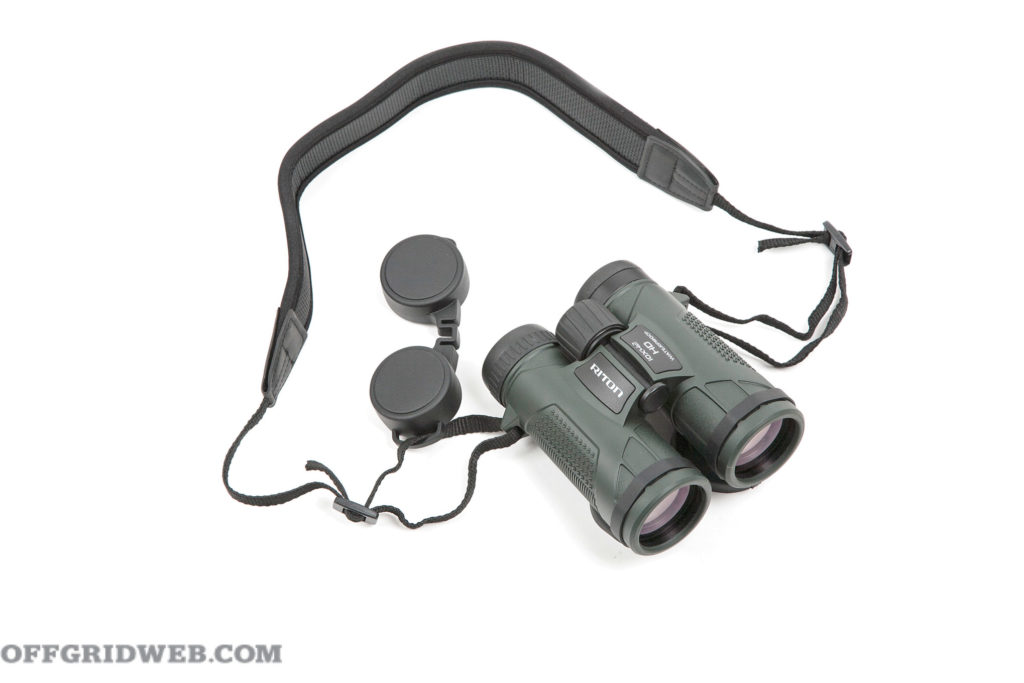
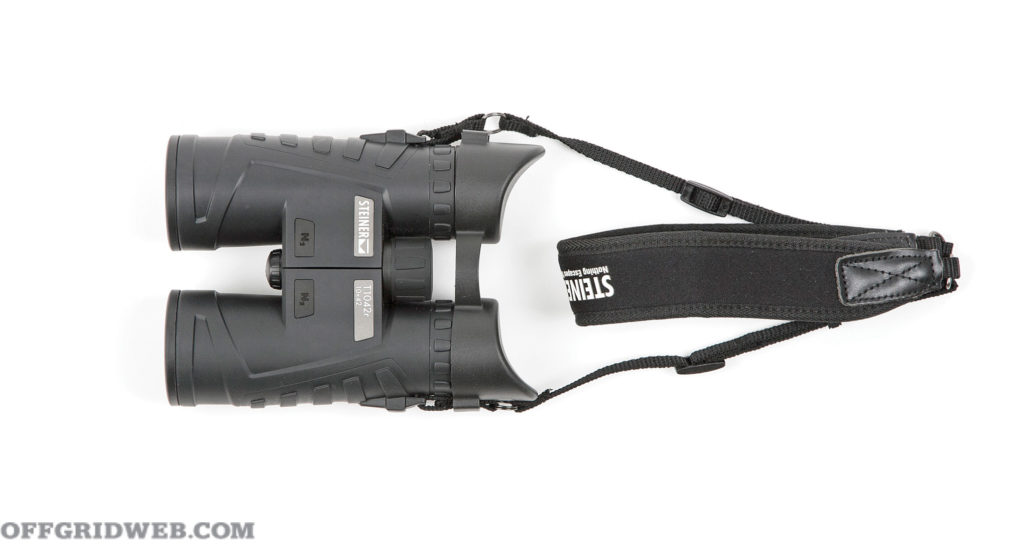
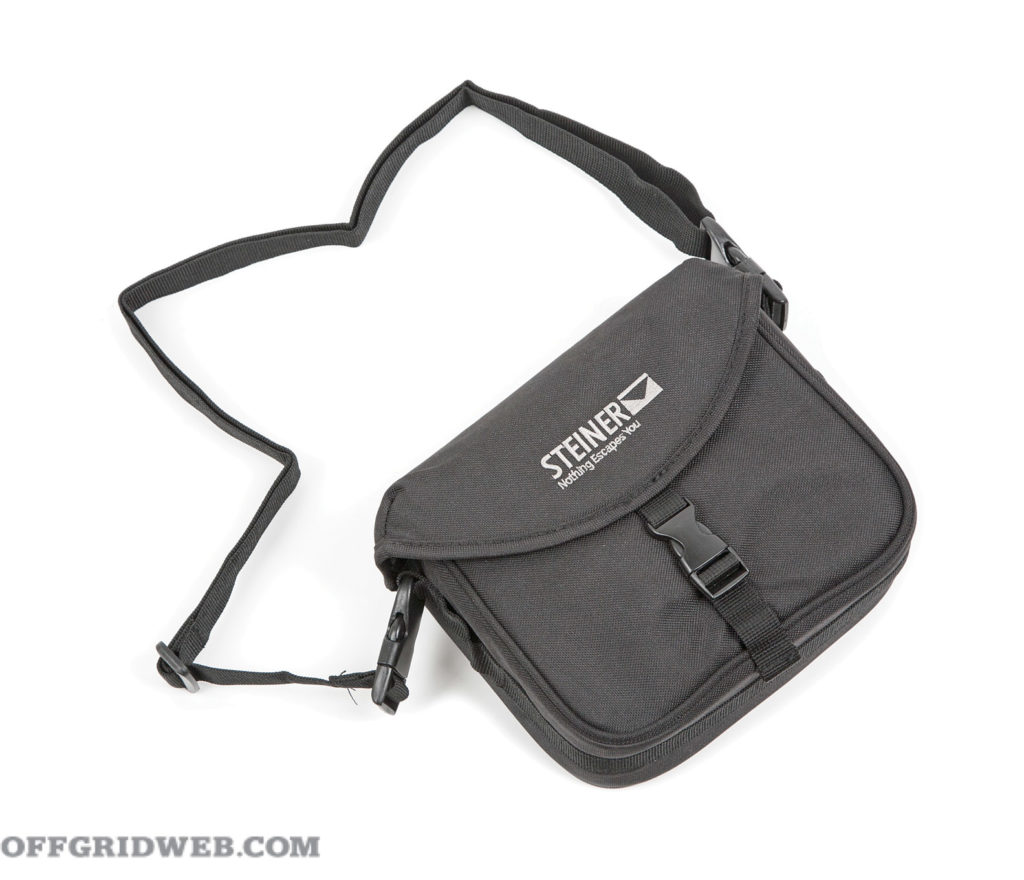
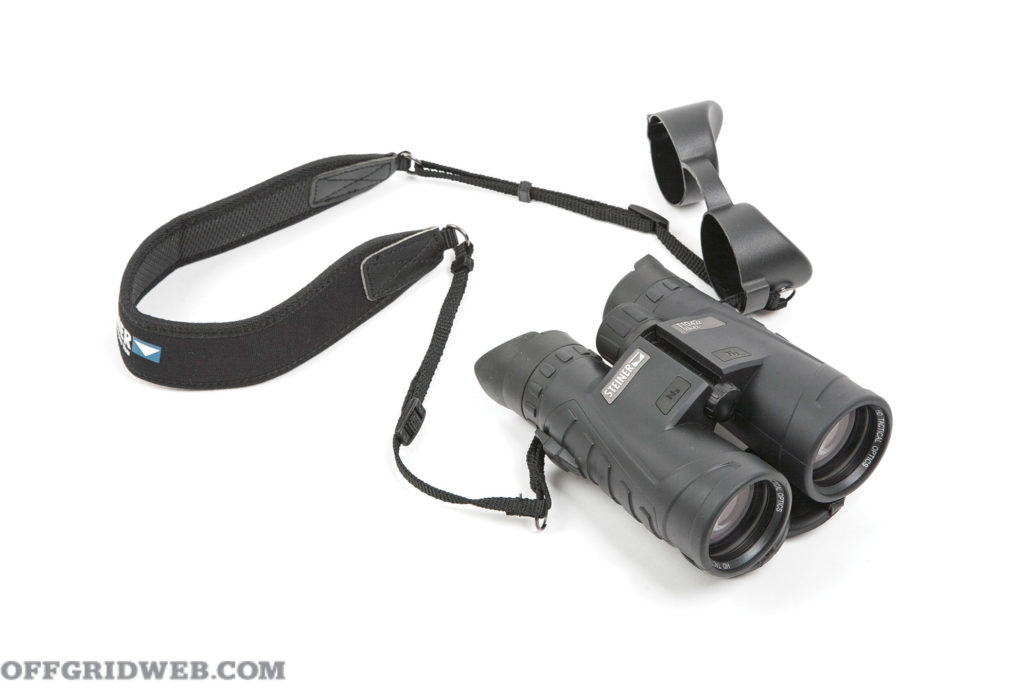
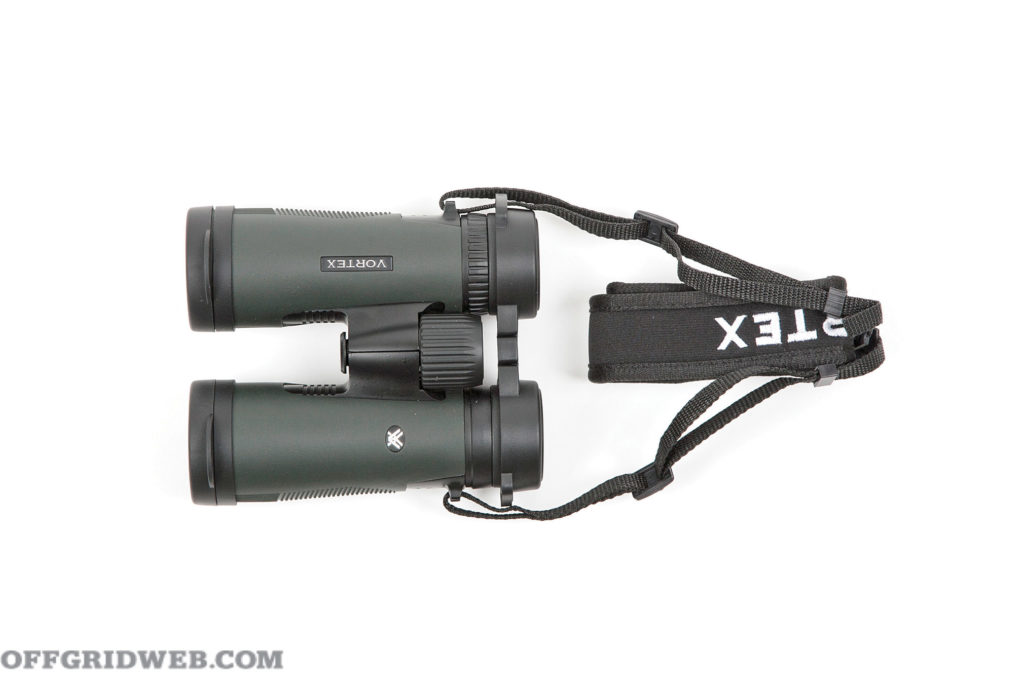
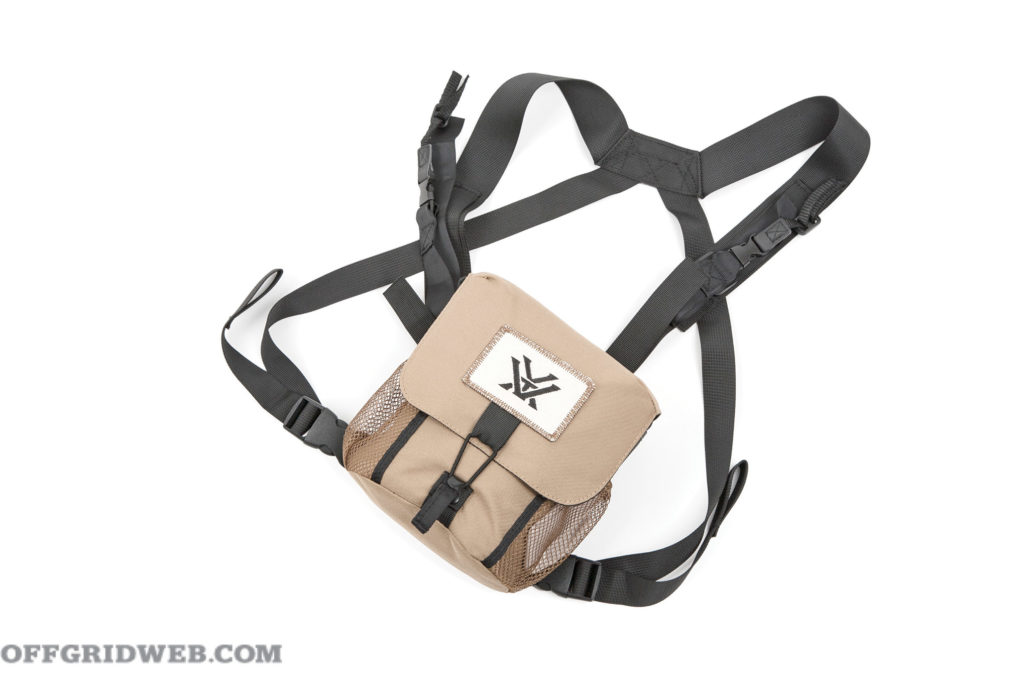
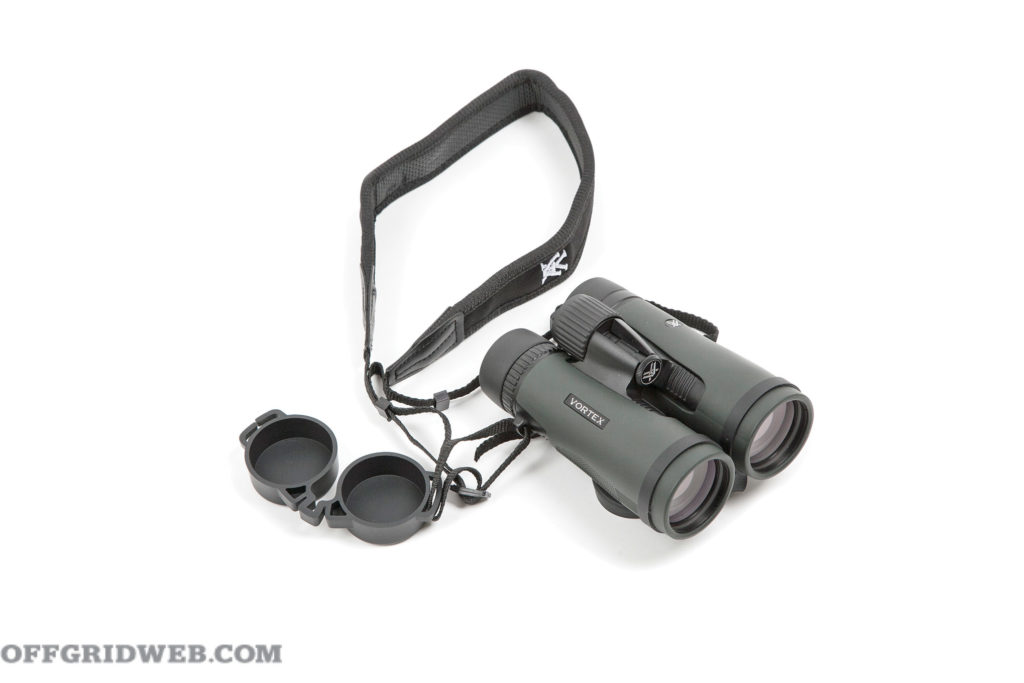
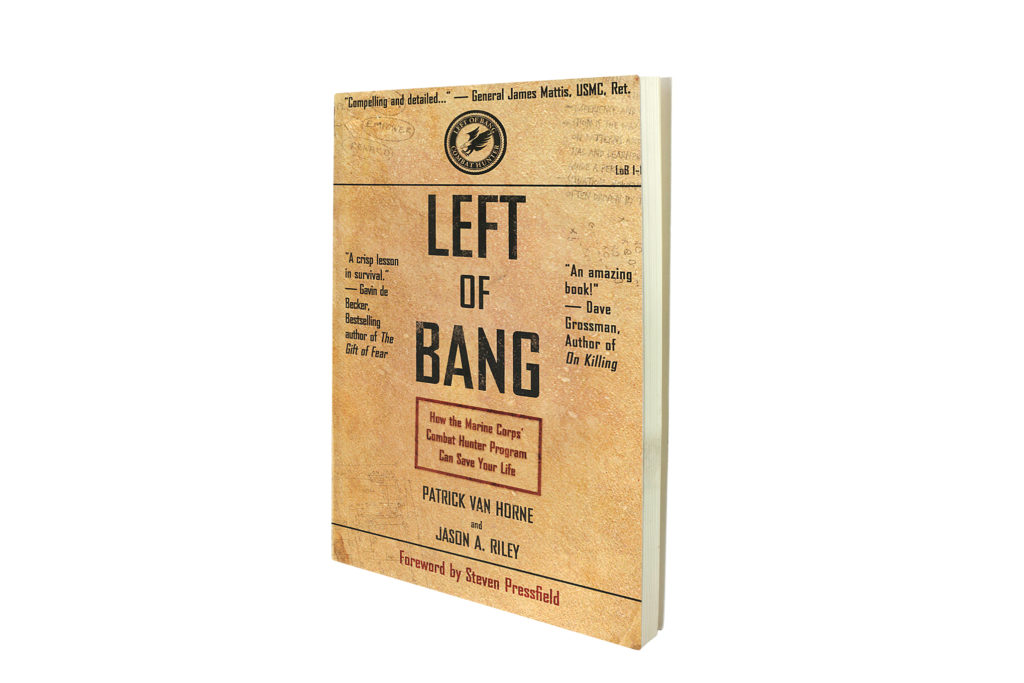
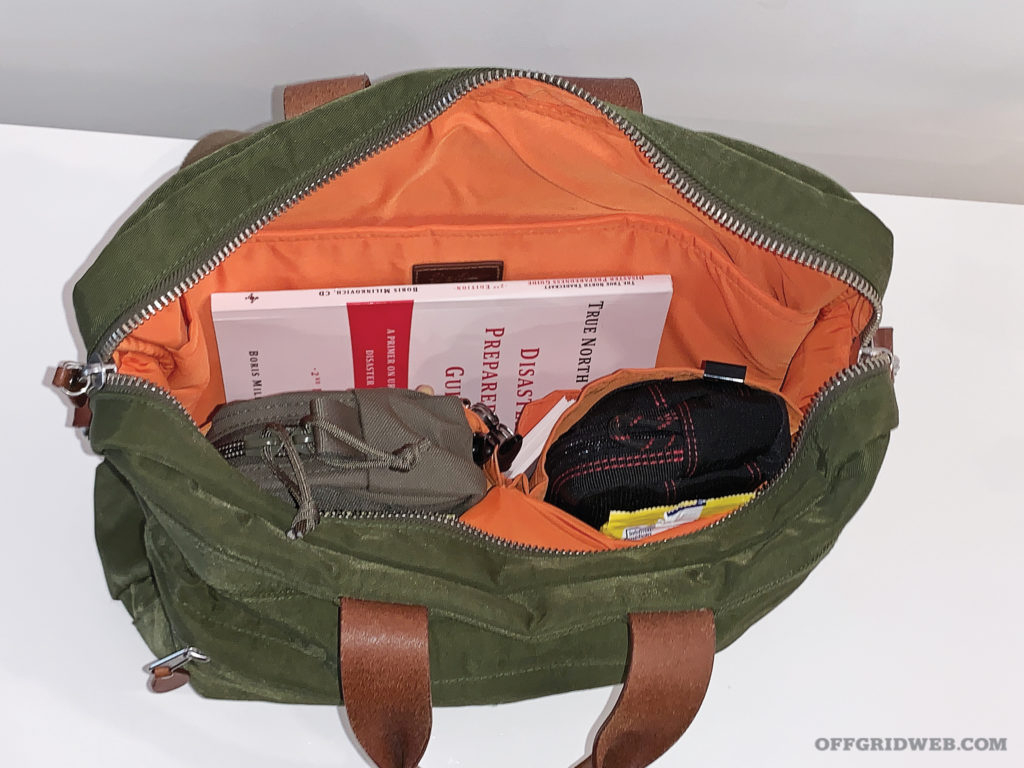
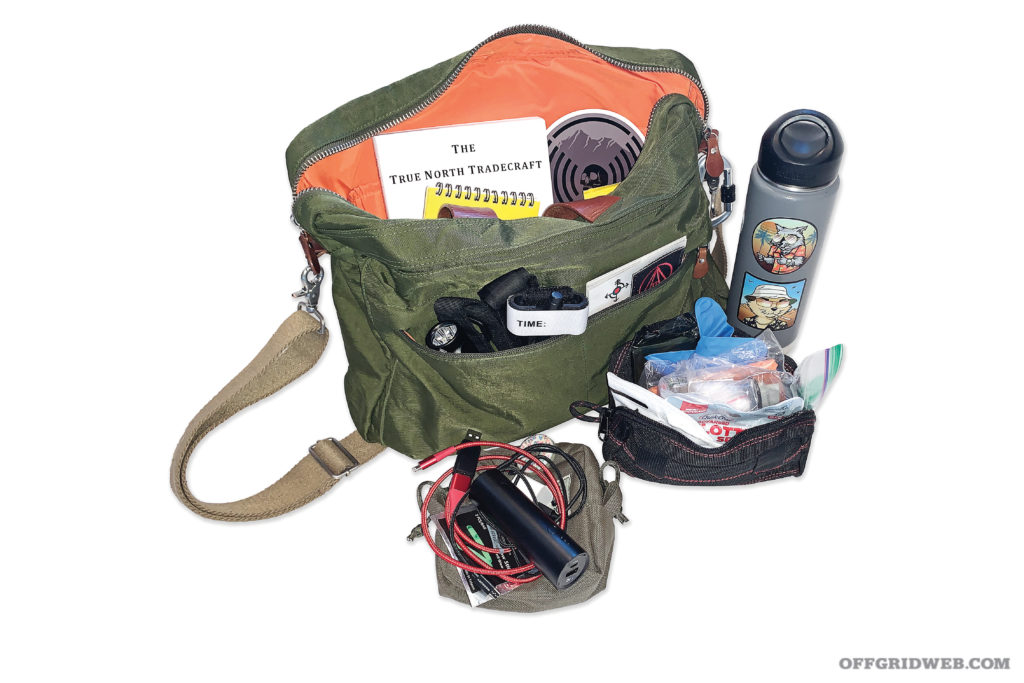

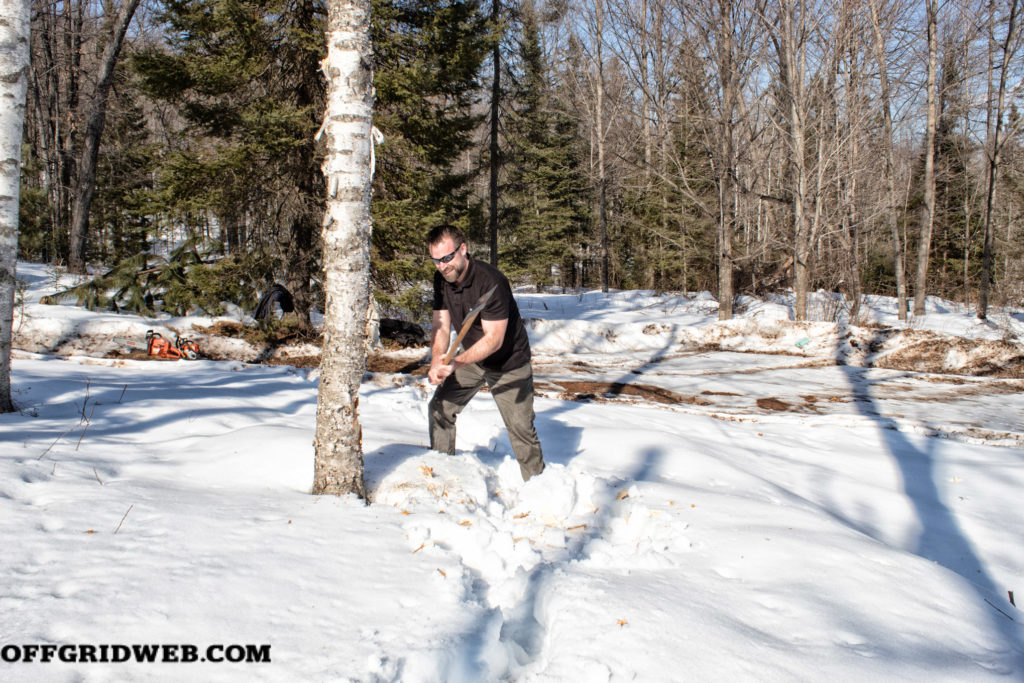
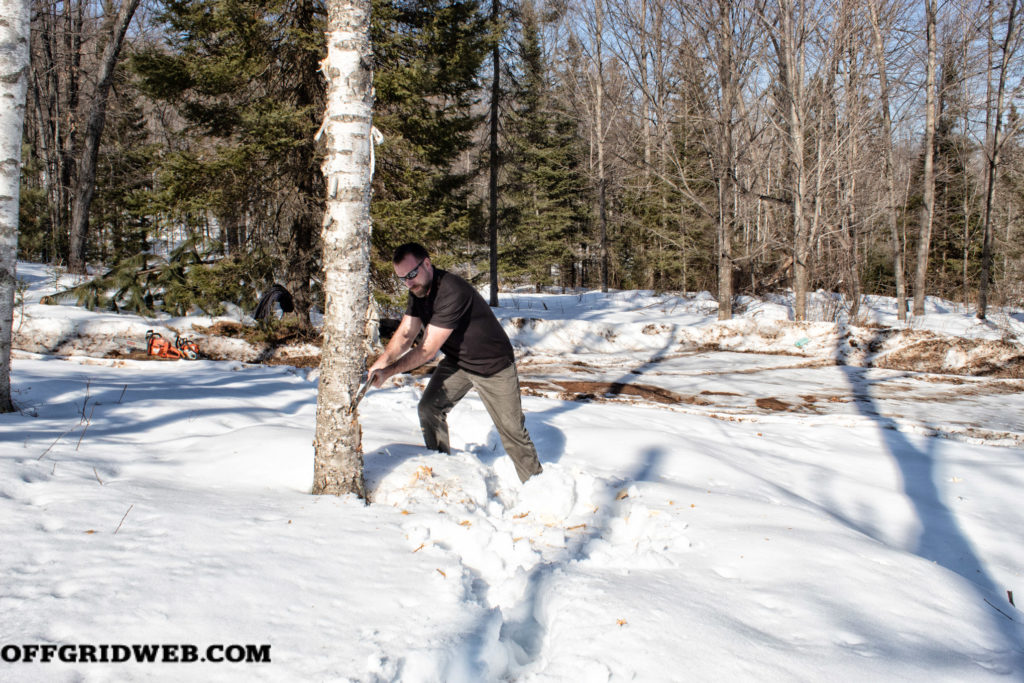
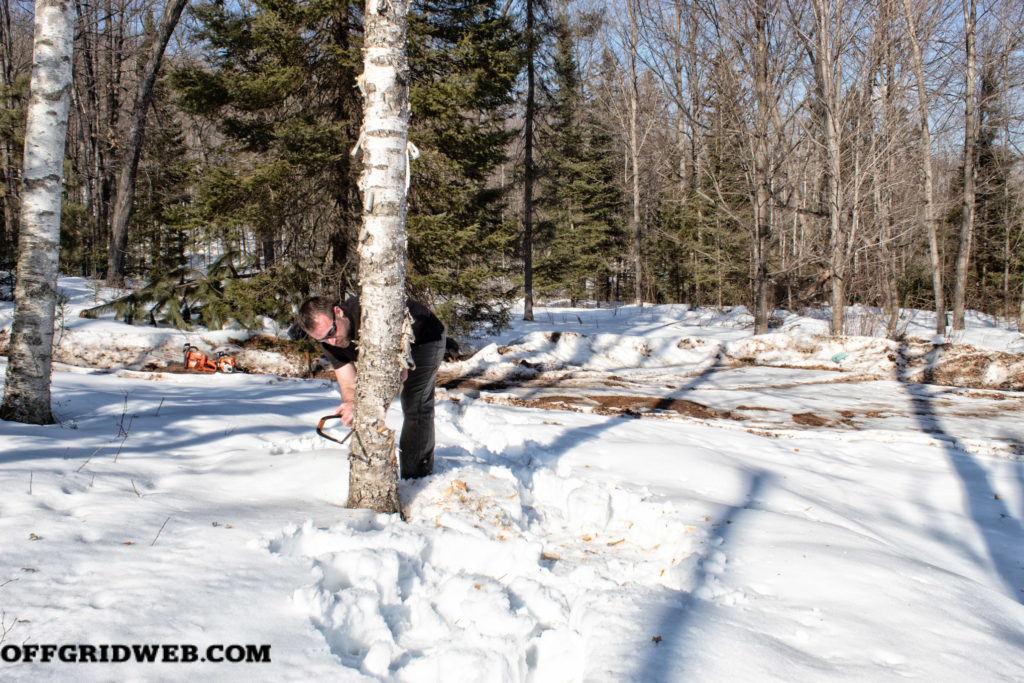
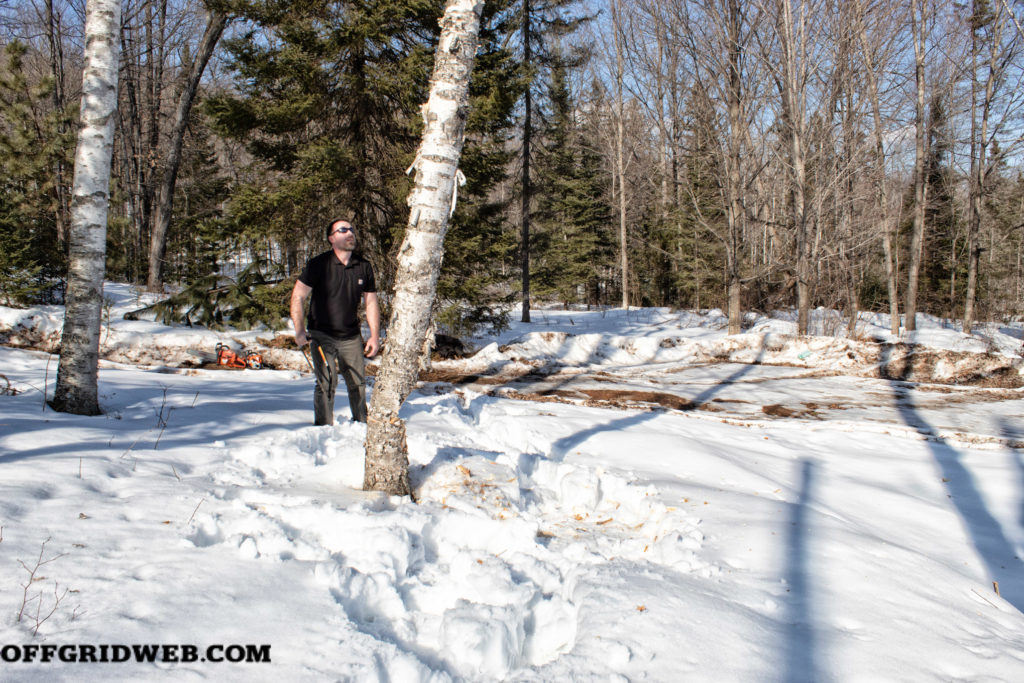
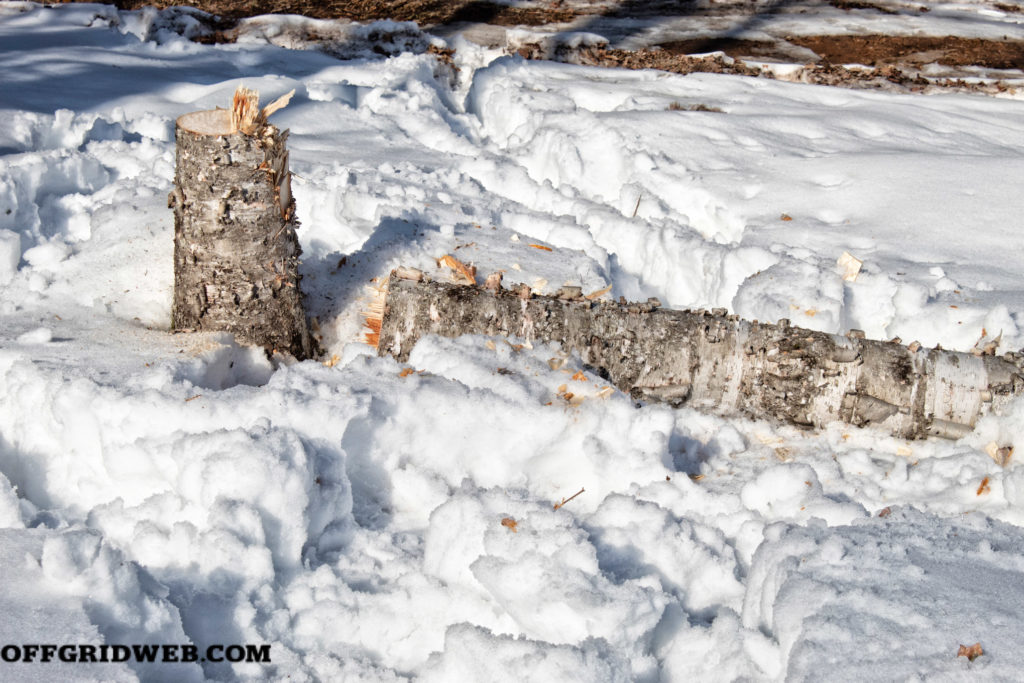

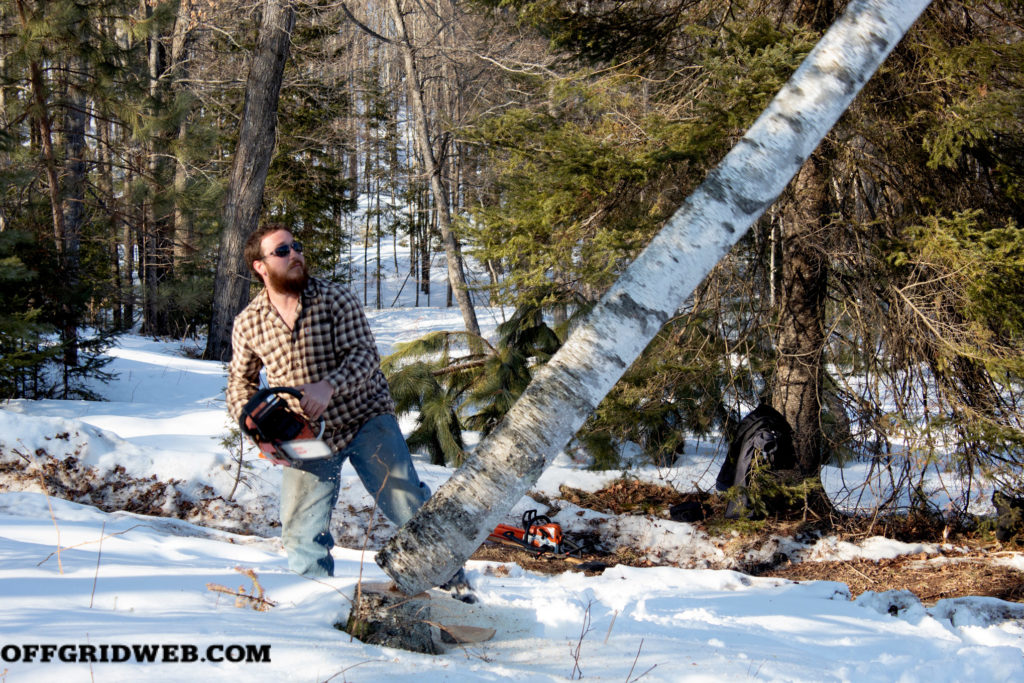
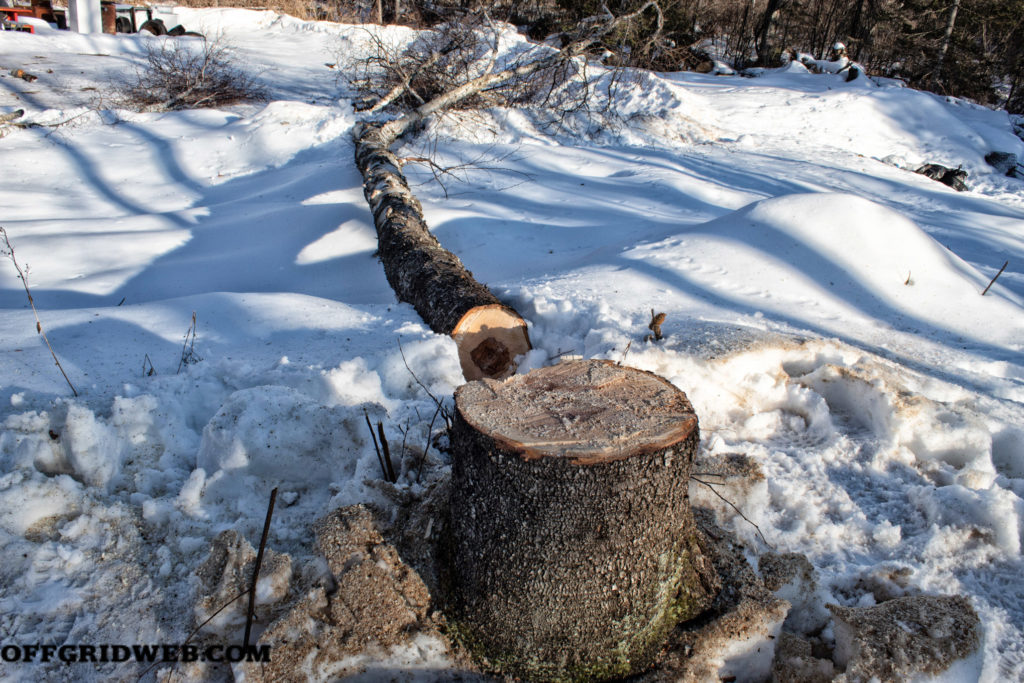
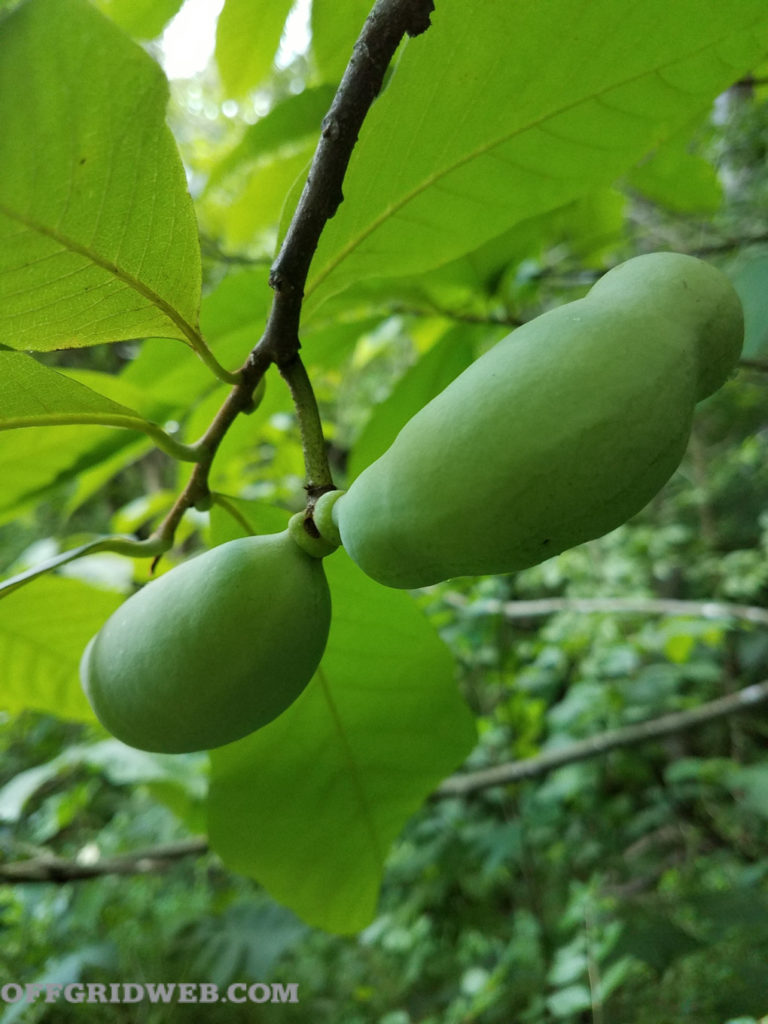
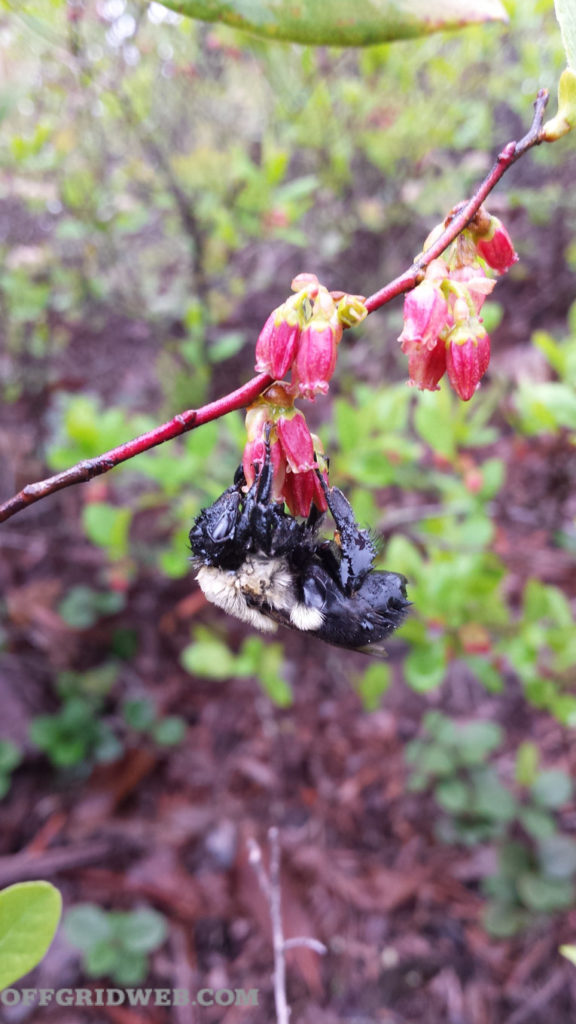
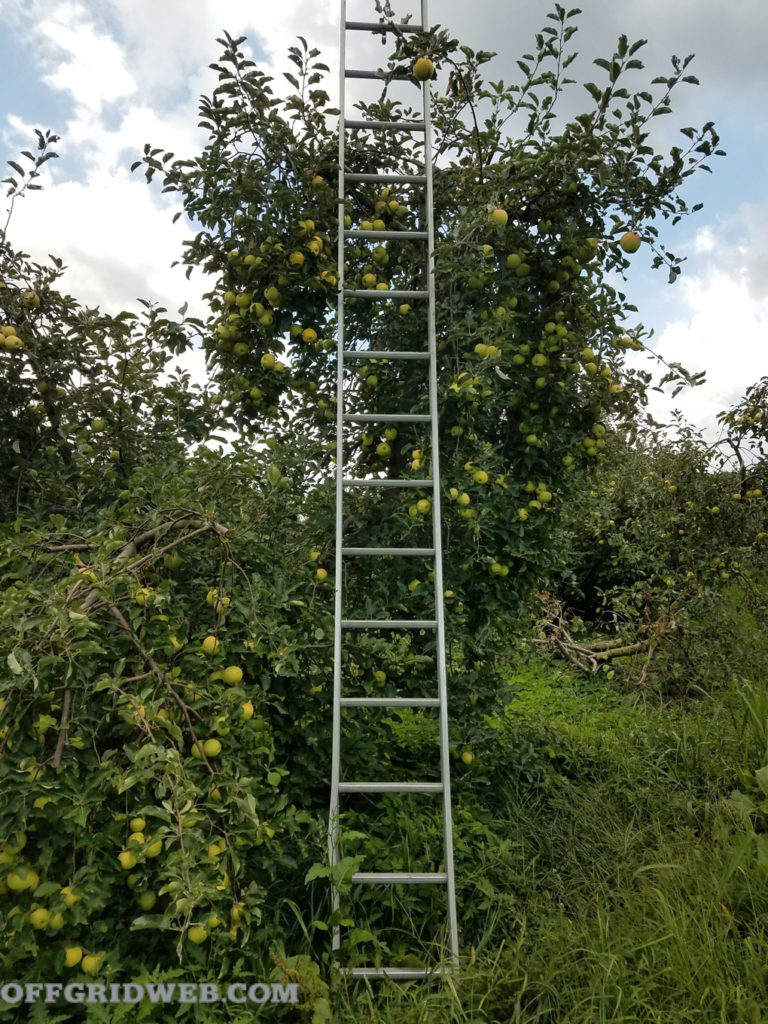
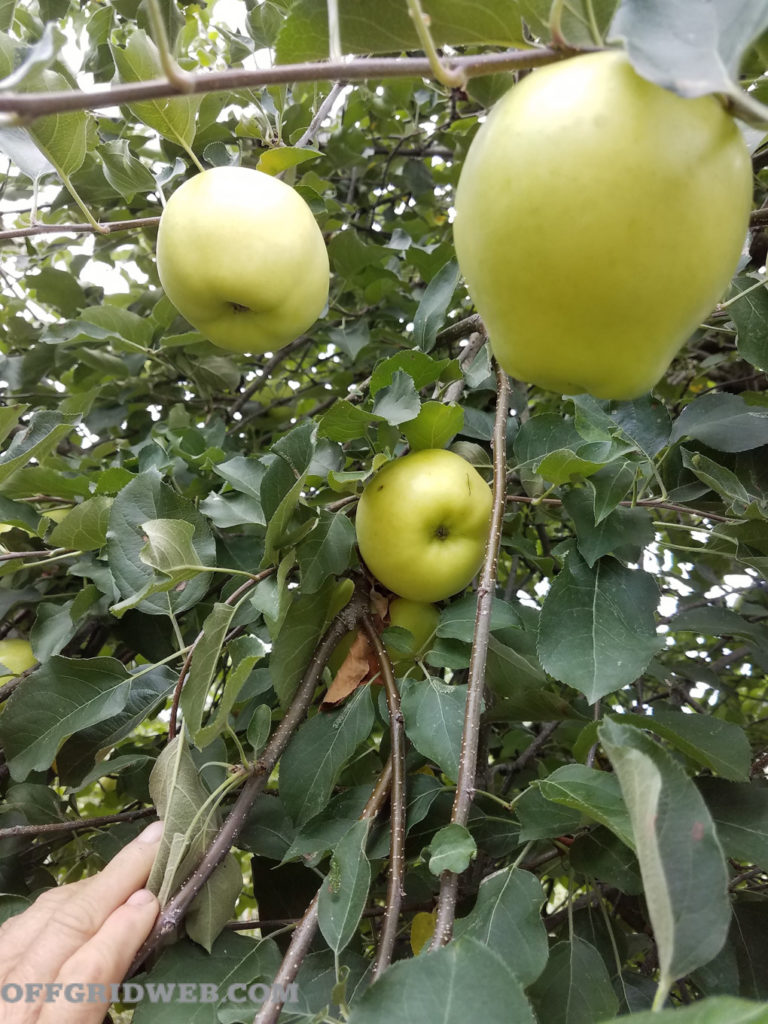
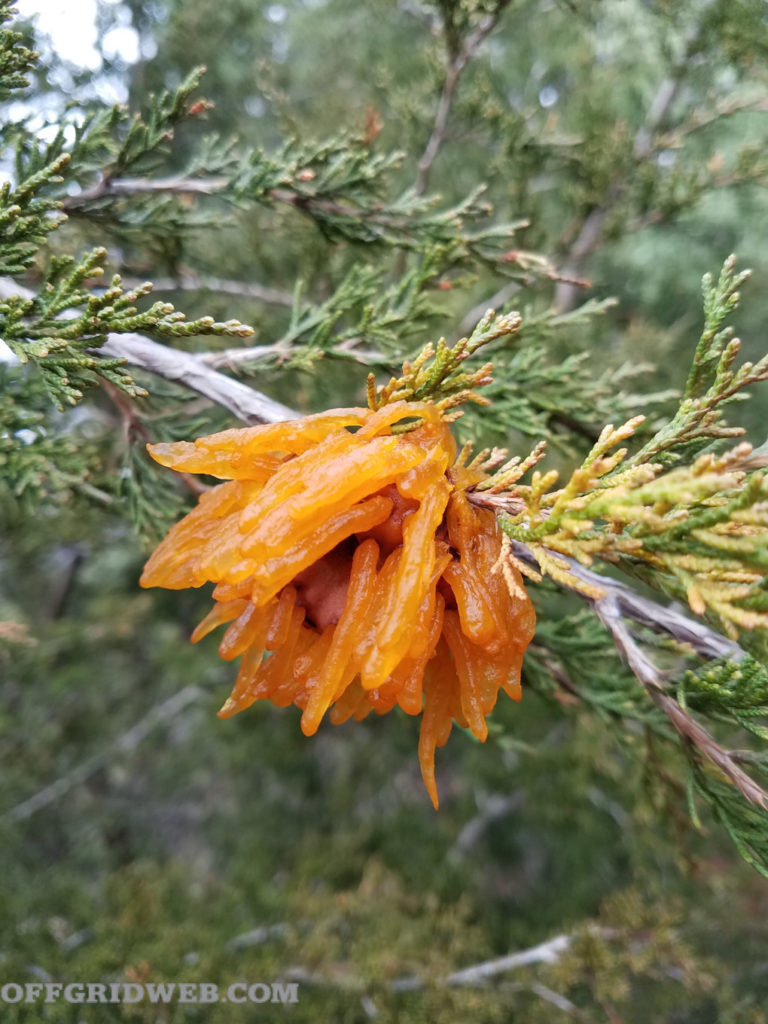
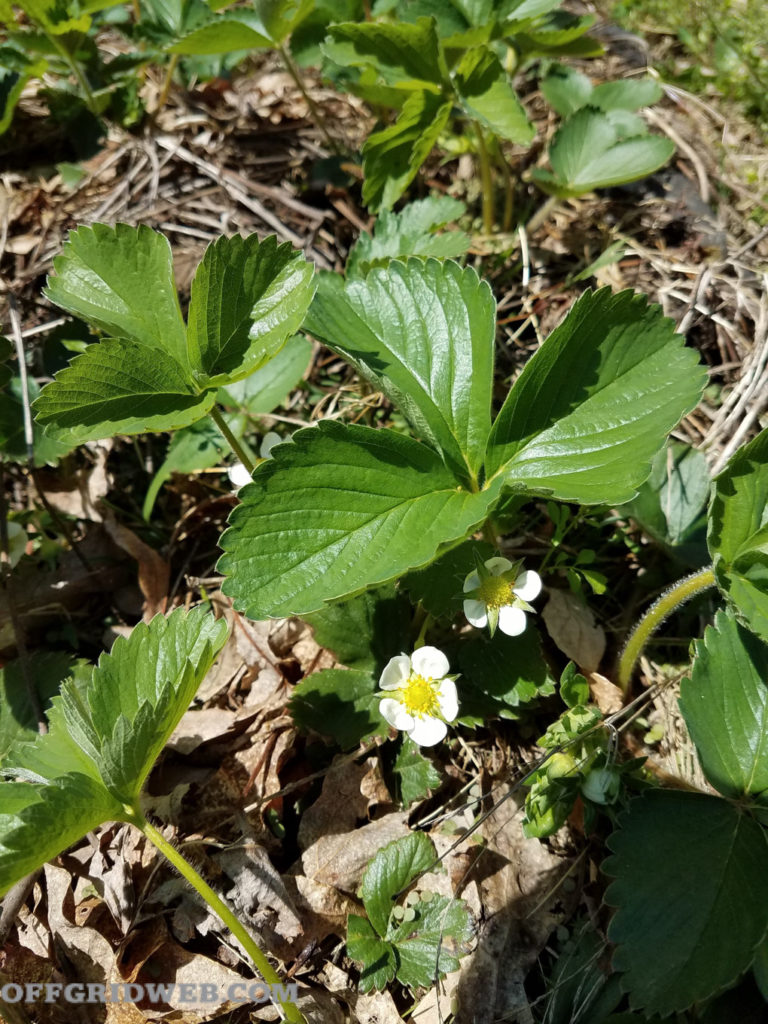
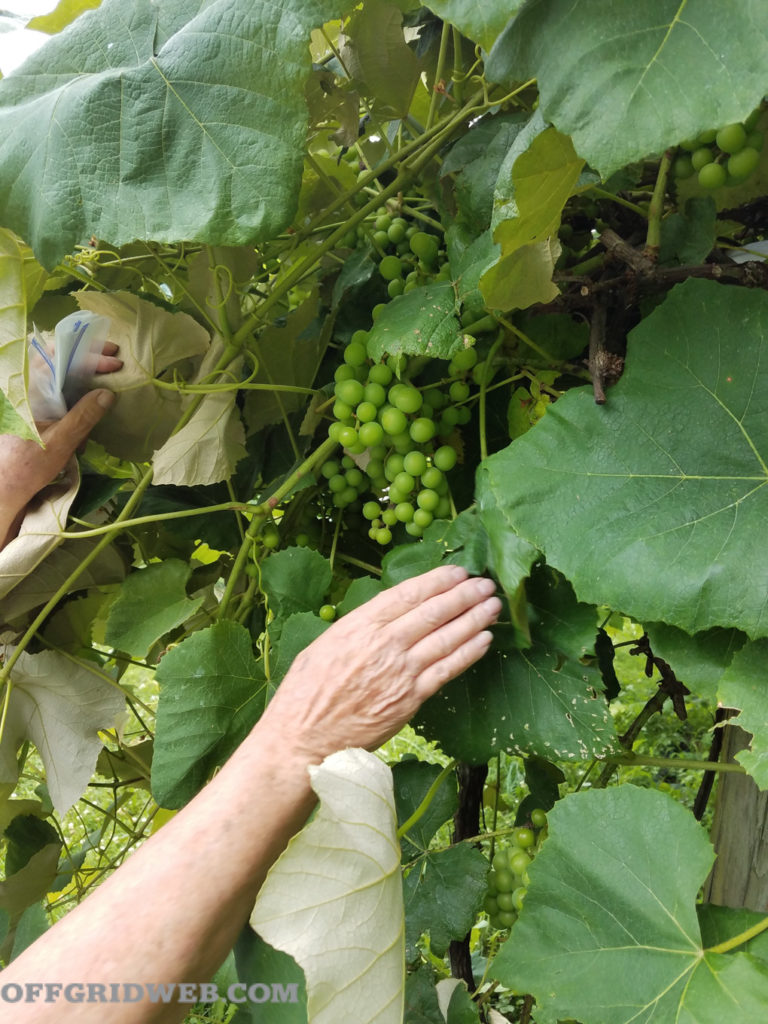 Above: The more humid your climate, the earlier you’ll need to manage for fungal diseases in grapes.
Above: The more humid your climate, the earlier you’ll need to manage for fungal diseases in grapes.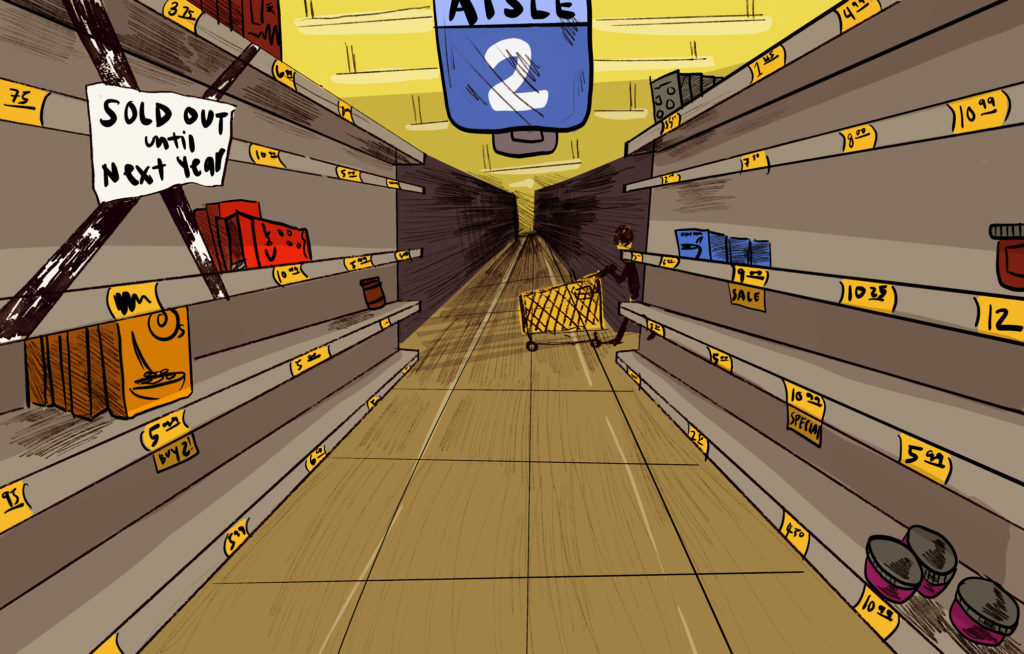
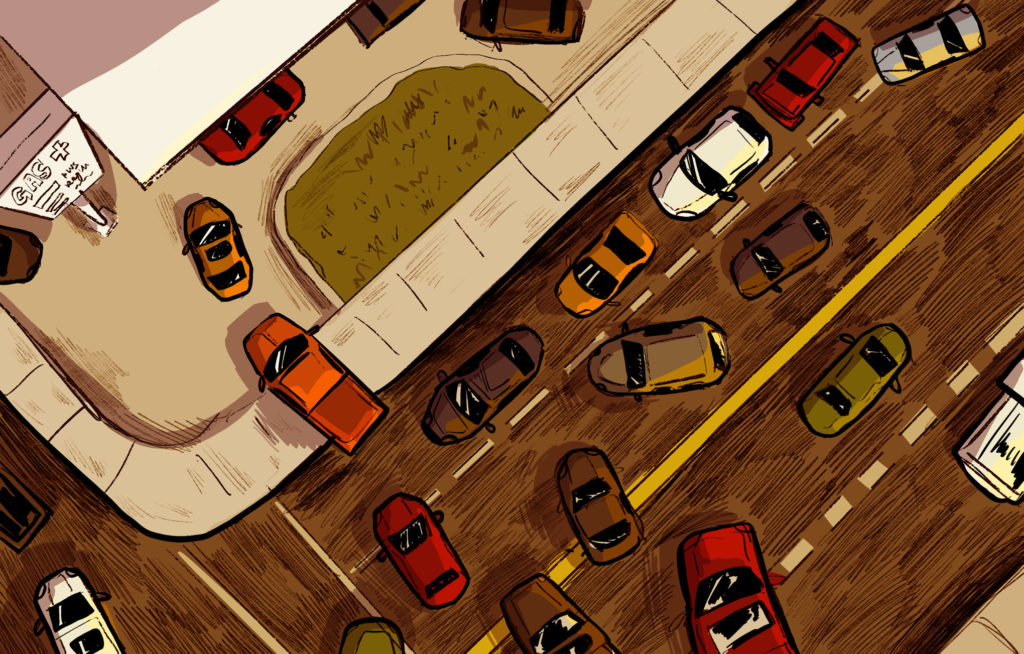
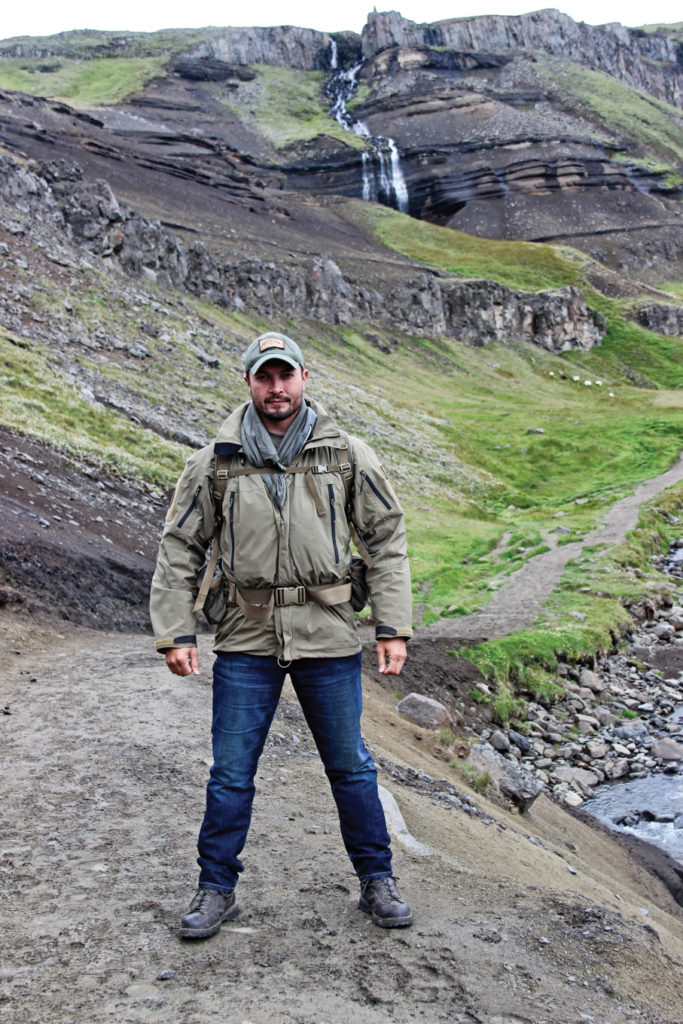


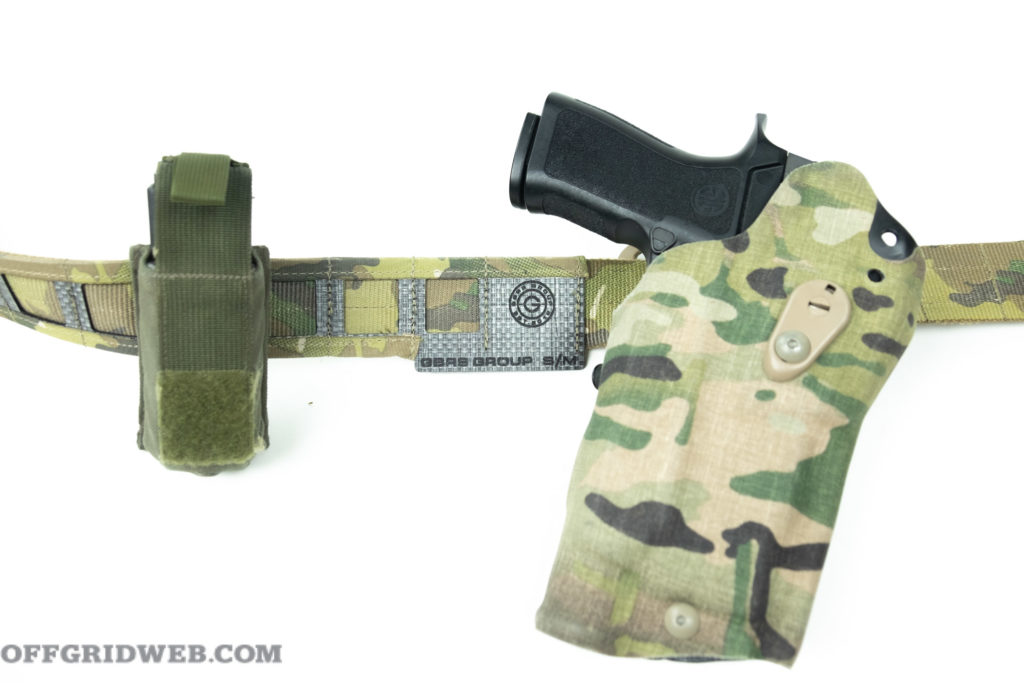
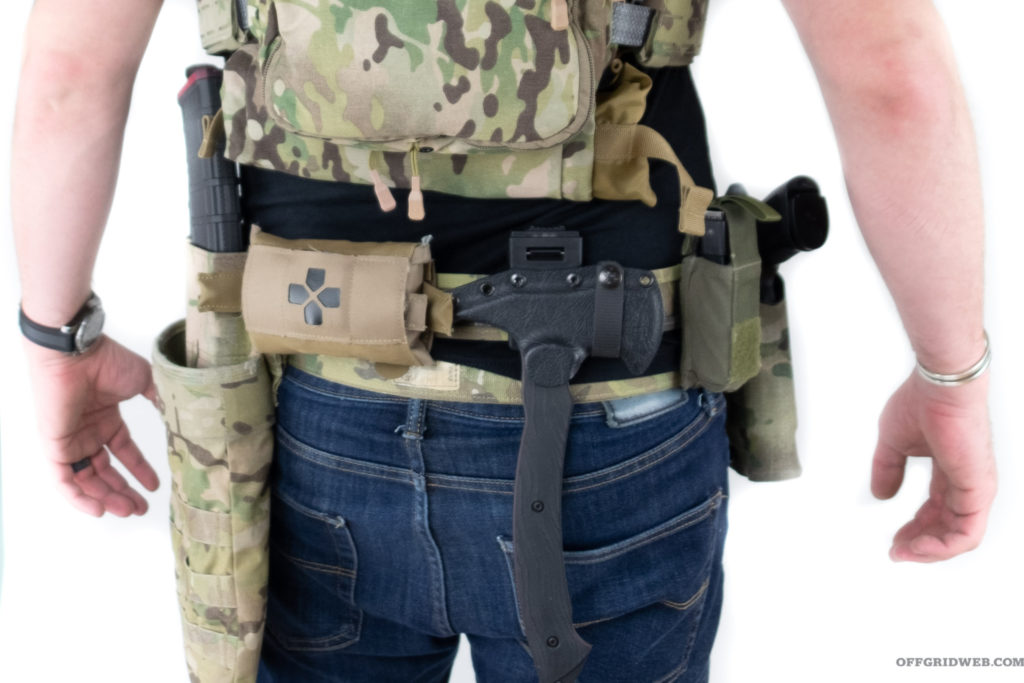
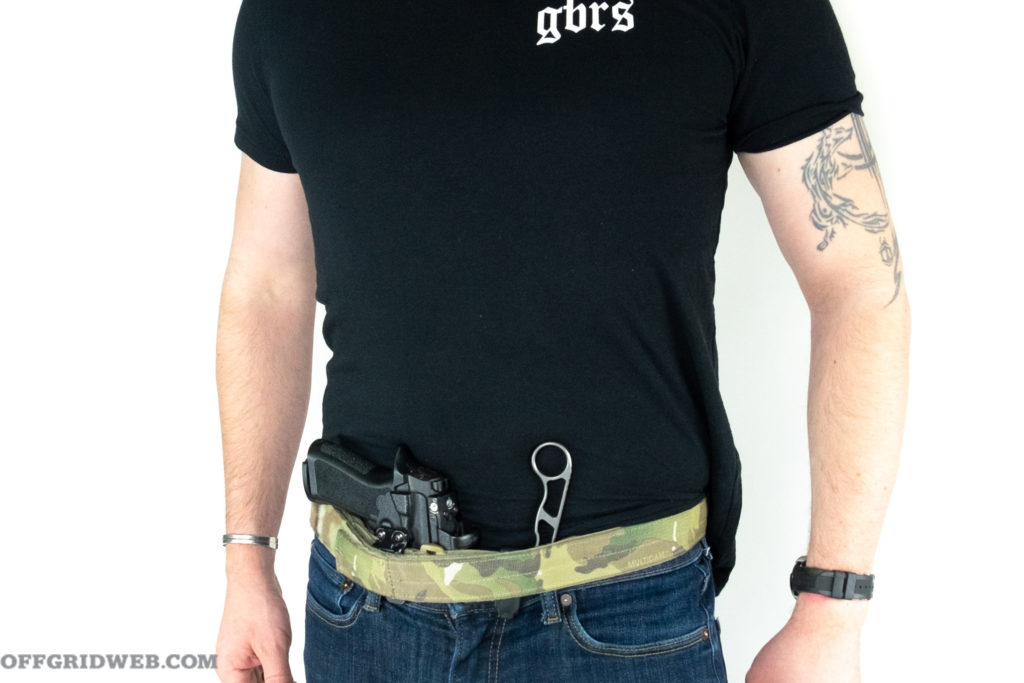 Does the GBRS Group Assaulter Belt base layer make for a good EDC belt? Yes and no. Until a Black version is released, it comes in Multicam, which in some places it is viewed as a mere random fashion choice, in others, like Minneapolis, it'll draw attention at the time of writing. Make no mistake, you're not taking off your pants in a steamy, sexy slow-motion smooth maneuver, instead, it's the tearing sound of hook and loop fastening. In regards to EDC gear, this is chastity belt secure, however. What's attached is staying attached.
Does the GBRS Group Assaulter Belt base layer make for a good EDC belt? Yes and no. Until a Black version is released, it comes in Multicam, which in some places it is viewed as a mere random fashion choice, in others, like Minneapolis, it'll draw attention at the time of writing. Make no mistake, you're not taking off your pants in a steamy, sexy slow-motion smooth maneuver, instead, it's the tearing sound of hook and loop fastening. In regards to EDC gear, this is chastity belt secure, however. What's attached is staying attached.










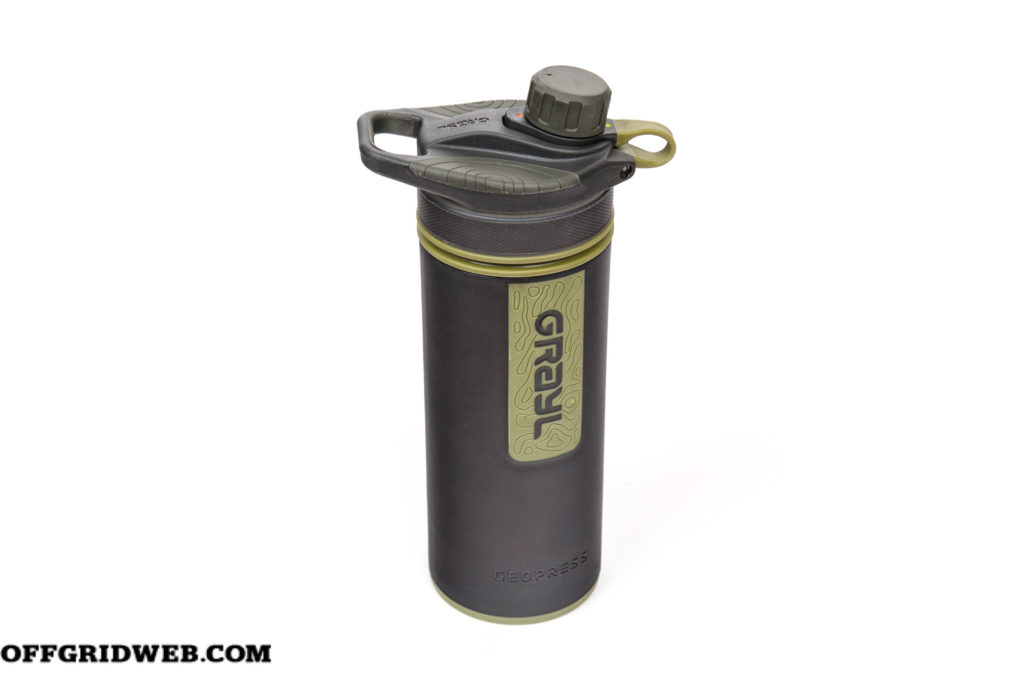
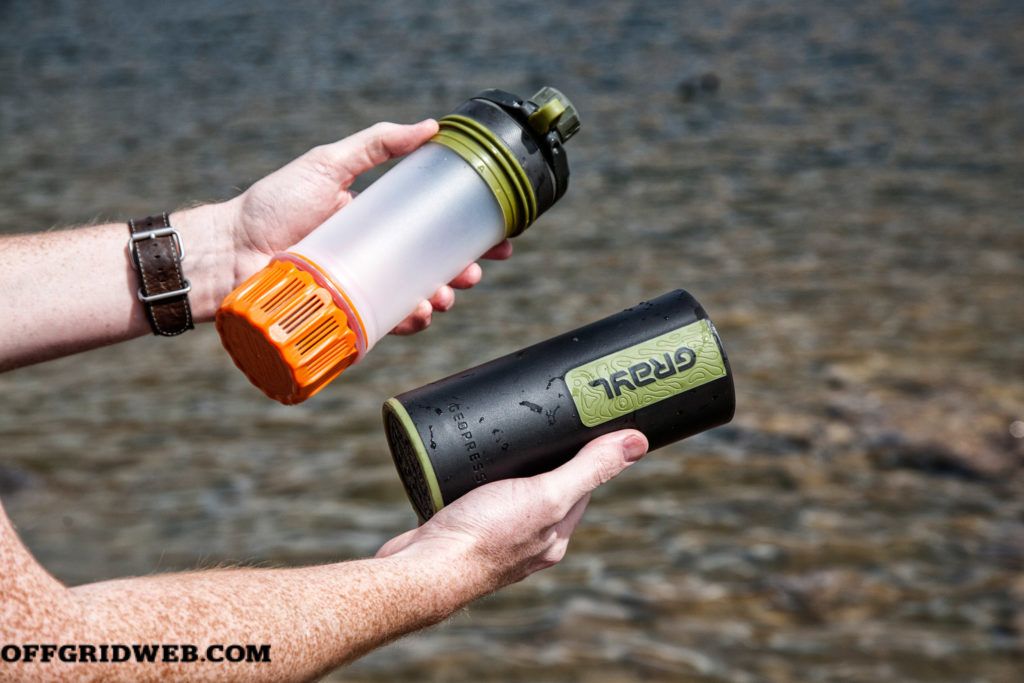 1. Pull apart to separate outer sleeve from the purifier.
1. Pull apart to separate outer sleeve from the purifier. 2. Fill sleeve with dirty water to the indicated maximum line.
2. Fill sleeve with dirty water to the indicated maximum line. 3. Loosen “Simplevent” spout cap by a half turn to allow air to escape. Then, press the purifier firmly into the sleeve, forcing water up through the purifier cartridge.
3. Loosen “Simplevent” spout cap by a half turn to allow air to escape. Then, press the purifier firmly into the sleeve, forcing water up through the purifier cartridge.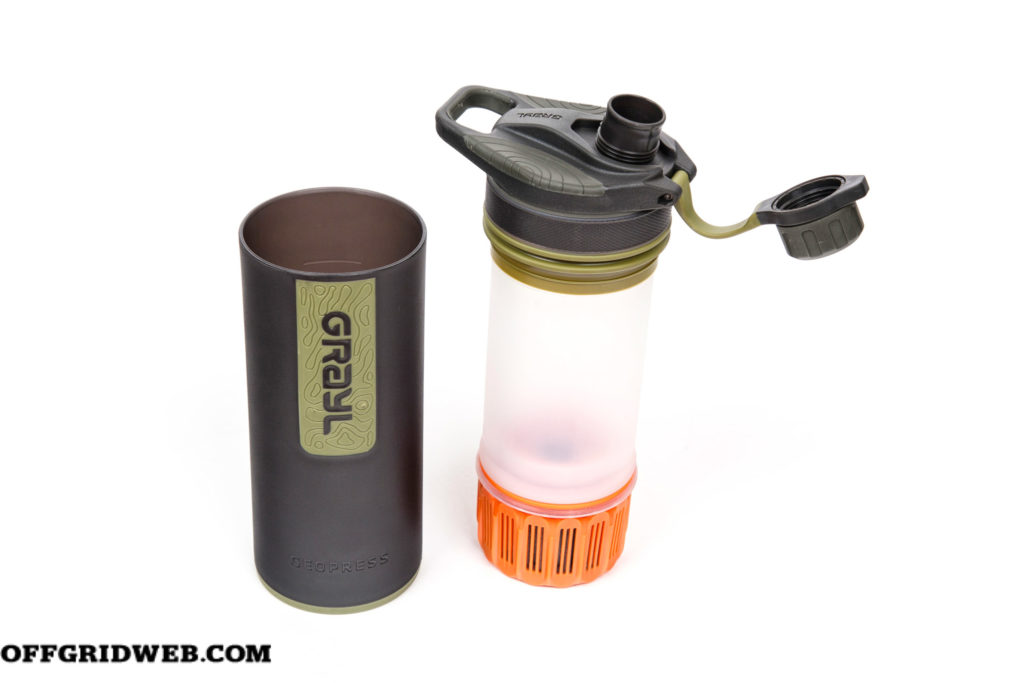
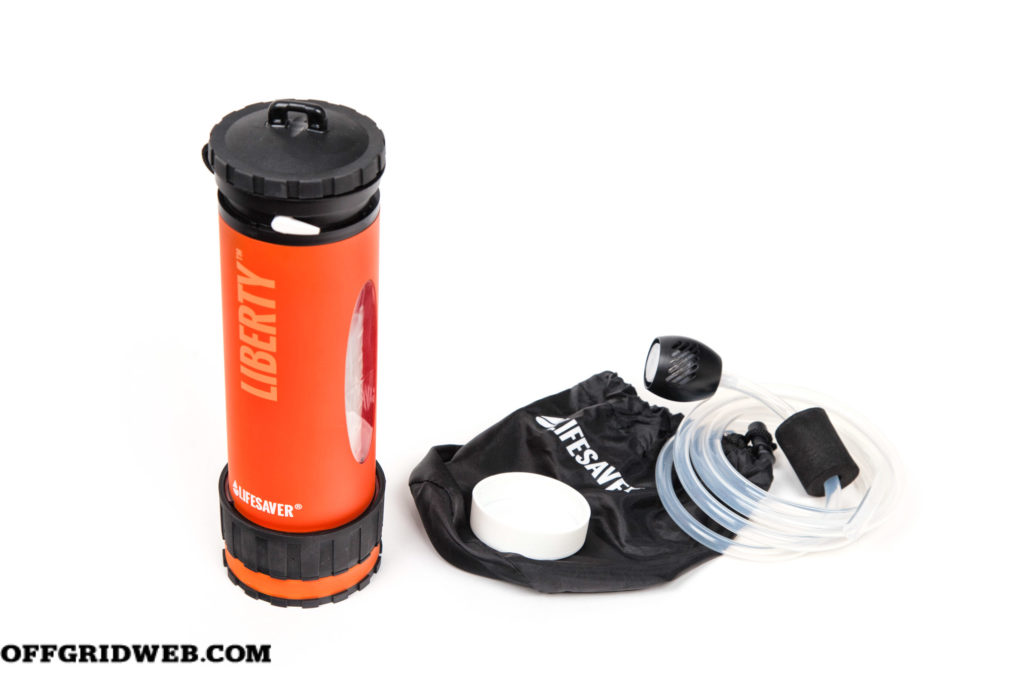
 1. Unscrew base of purifier, and scoop dirty water into the reservoir.
1. Unscrew base of purifier, and scoop dirty water into the reservoir. 2. Tightly screw on base, then twist bottom cap a half turn to unlock pump handle. Pump three times.
2. Tightly screw on base, then twist bottom cap a half turn to unlock pump handle. Pump three times.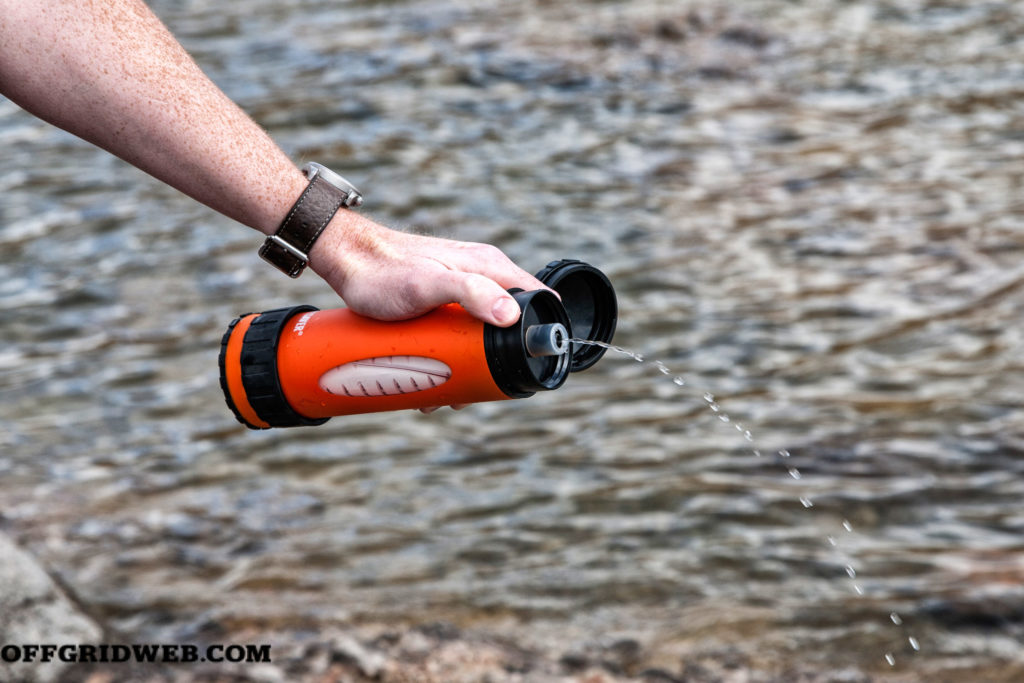 3. Unscrew top cap and rotate white flow valve 90 degrees to release pressurized water from nozzle. Continue pumping to maintain flow rate as needed.
3. Unscrew top cap and rotate white flow valve 90 degrees to release pressurized water from nozzle. Continue pumping to maintain flow rate as needed. Attach scavenger hose to inlet on bottom cap. Place float in dirty water source. Open lid and water flow valve, then pump continuously to maintain flow rate.
Attach scavenger hose to inlet on bottom cap. Place float in dirty water source. Open lid and water flow valve, then pump continuously to maintain flow rate.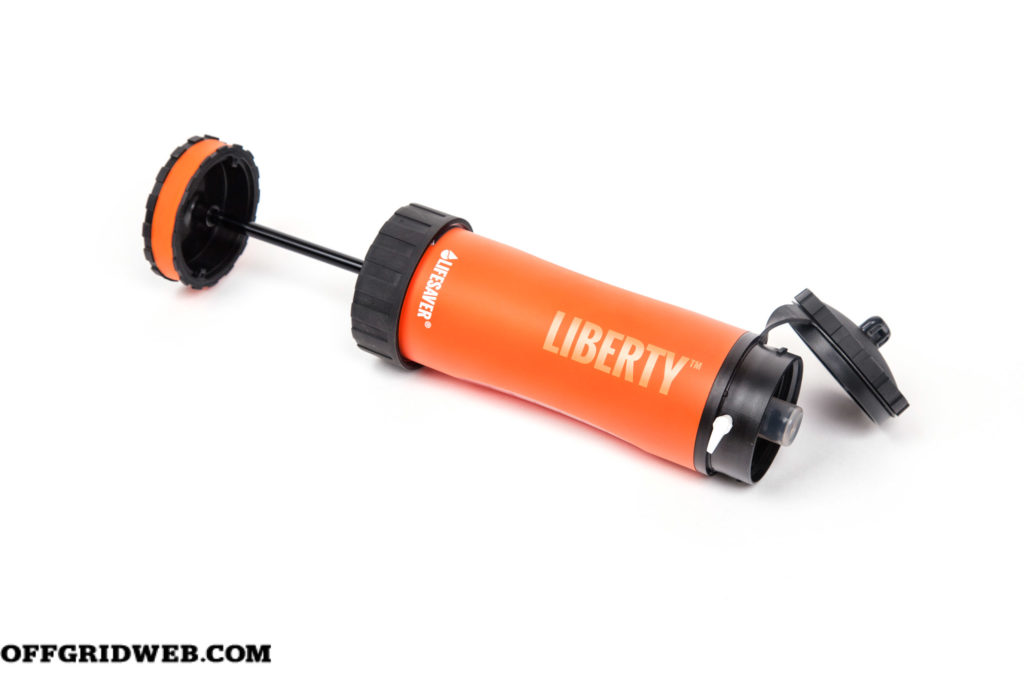
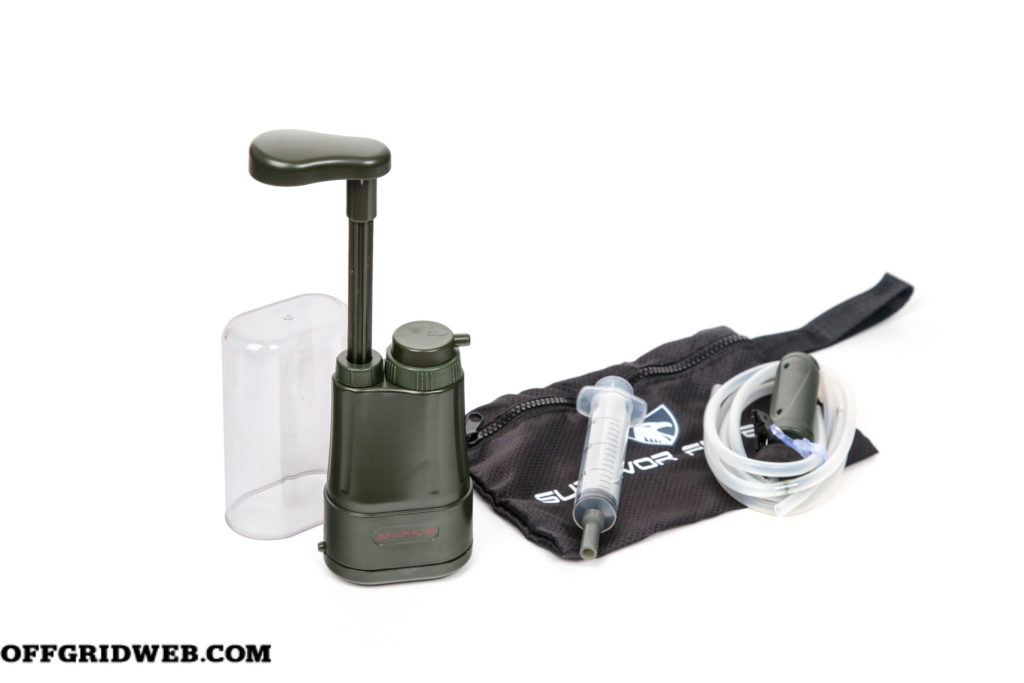
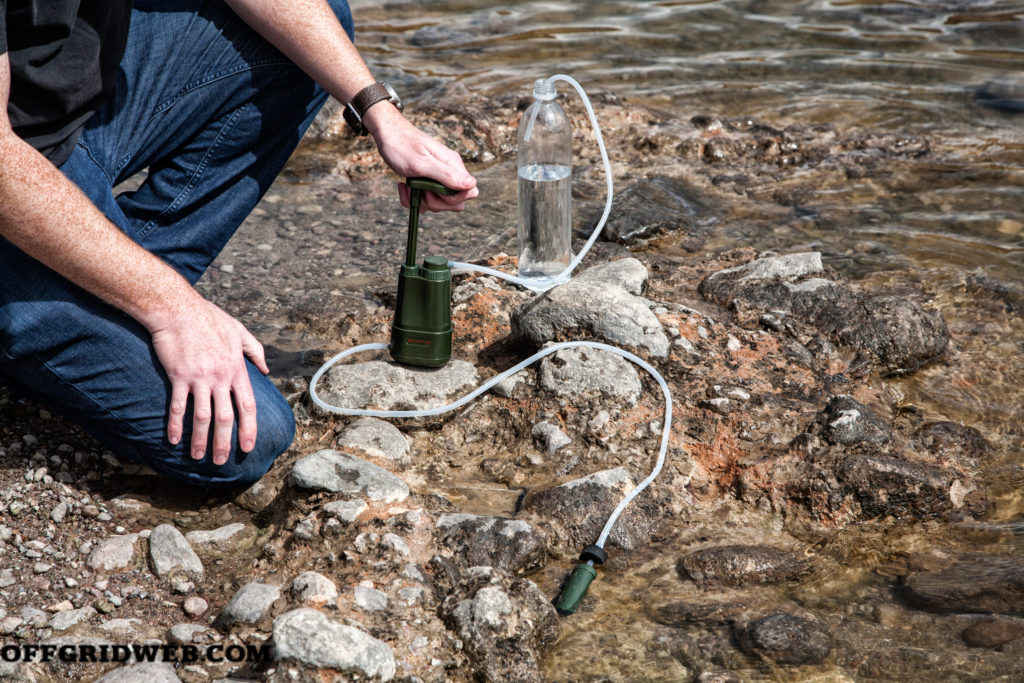 Connect inlet hose to lower nozzle, and place float in dirty water source. Remove clear plastic cap from unit and connect outlet hose to upper nozzle (marked “OUT”). Place end of outlet hose in the clear plastic cap, or a clean water reservoir of your choice, using the included clip to hold it in place if necessary. Pump handle to maintain flow rate.
Connect inlet hose to lower nozzle, and place float in dirty water source. Remove clear plastic cap from unit and connect outlet hose to upper nozzle (marked “OUT”). Place end of outlet hose in the clear plastic cap, or a clean water reservoir of your choice, using the included clip to hold it in place if necessary. Pump handle to maintain flow rate.